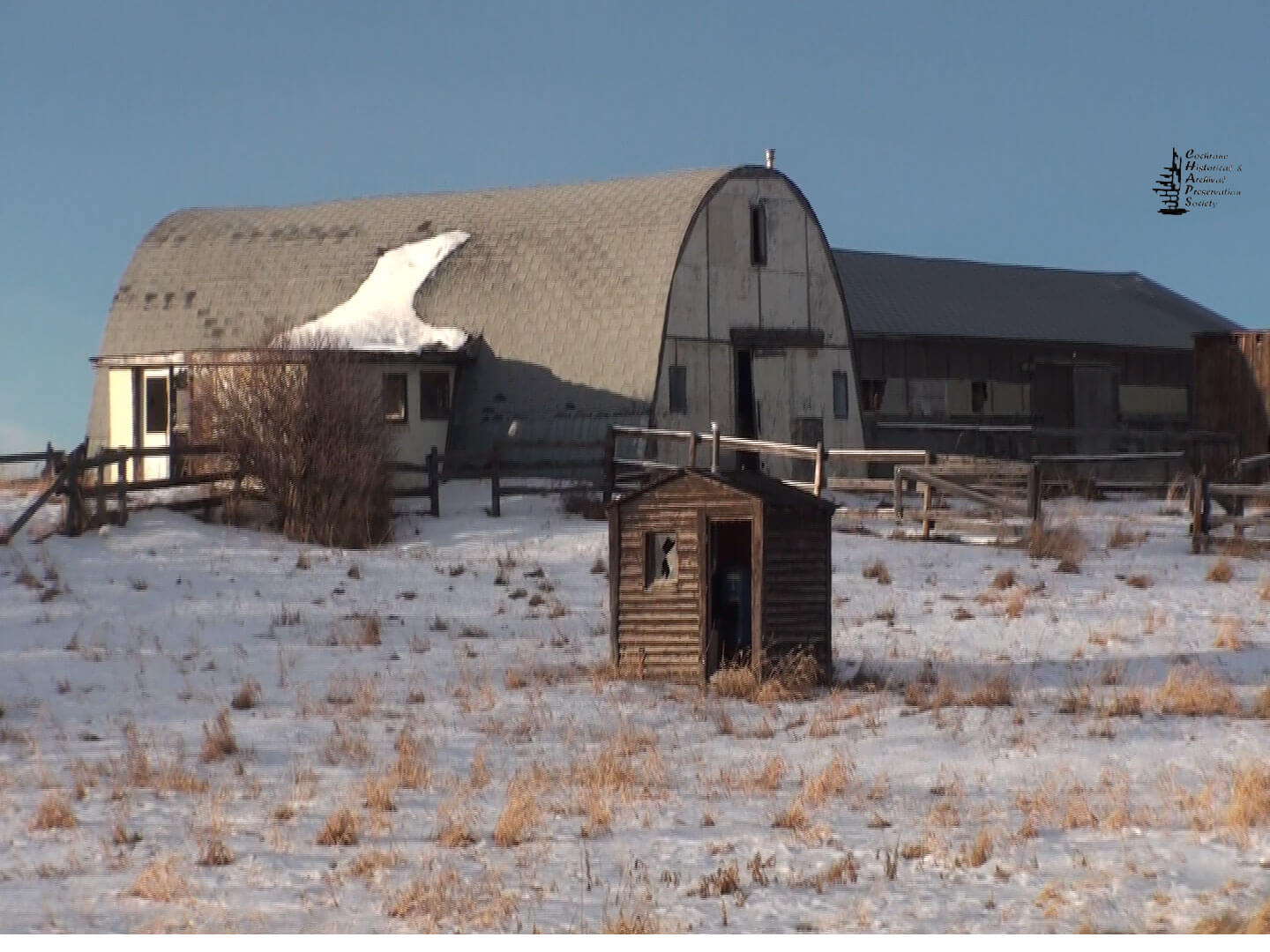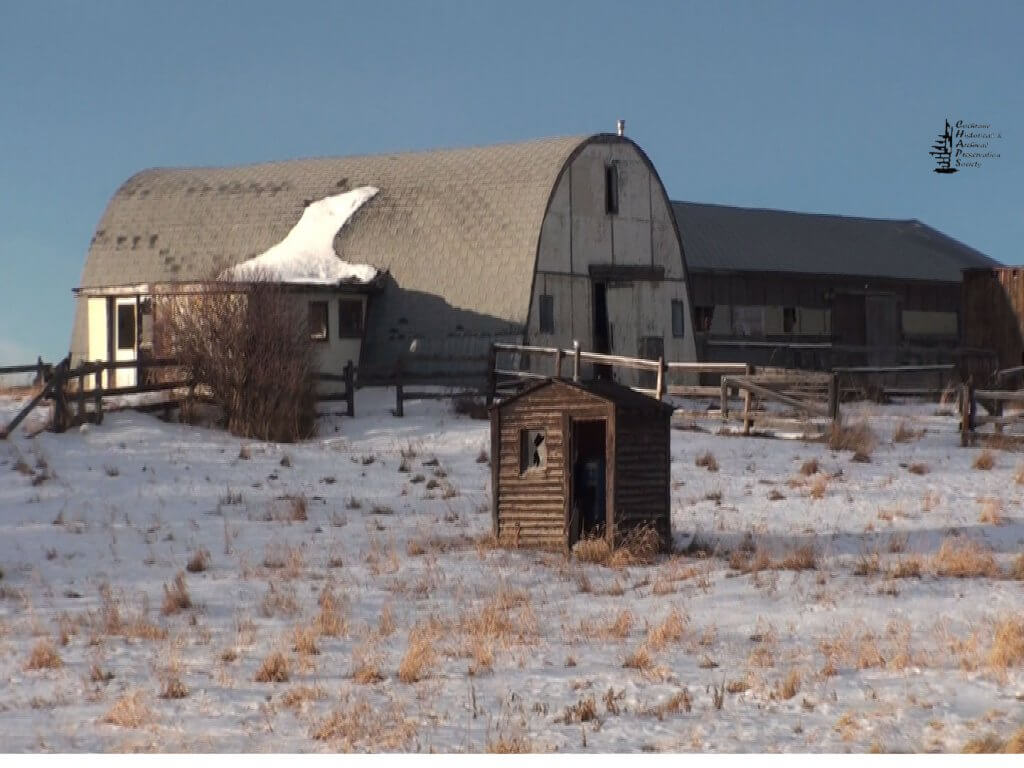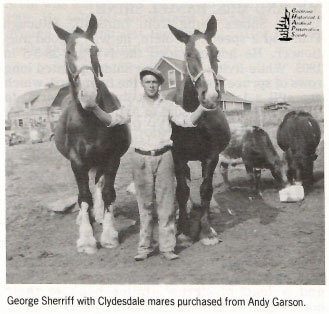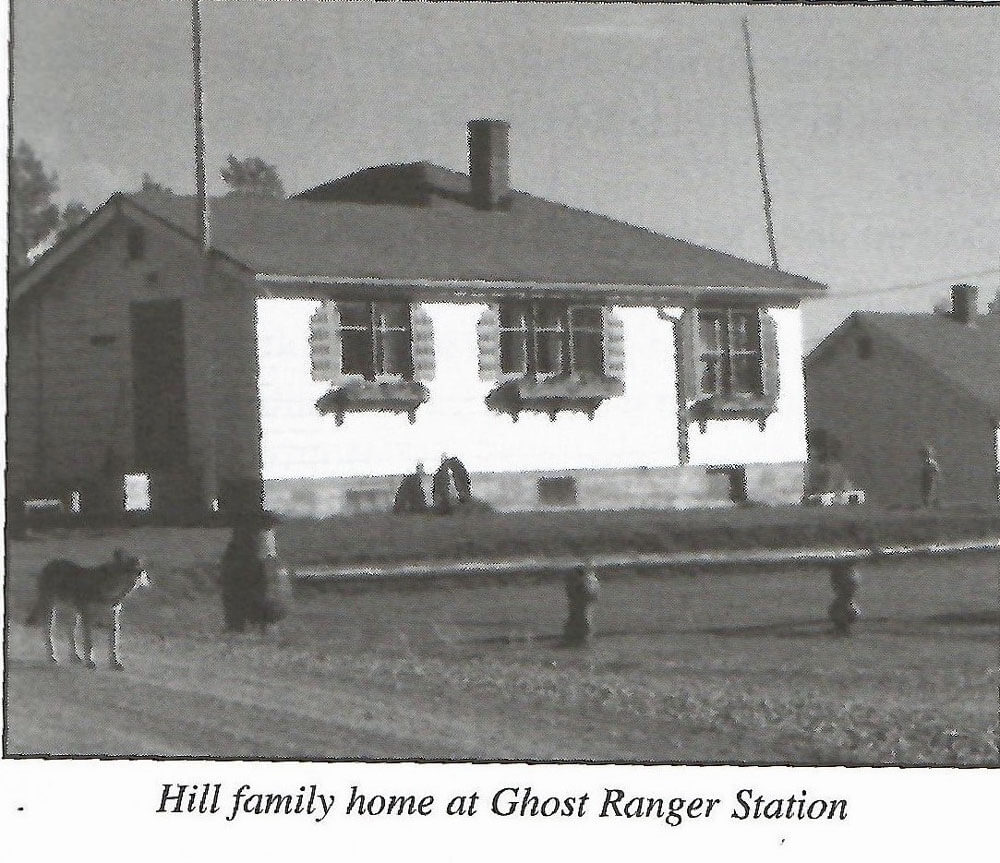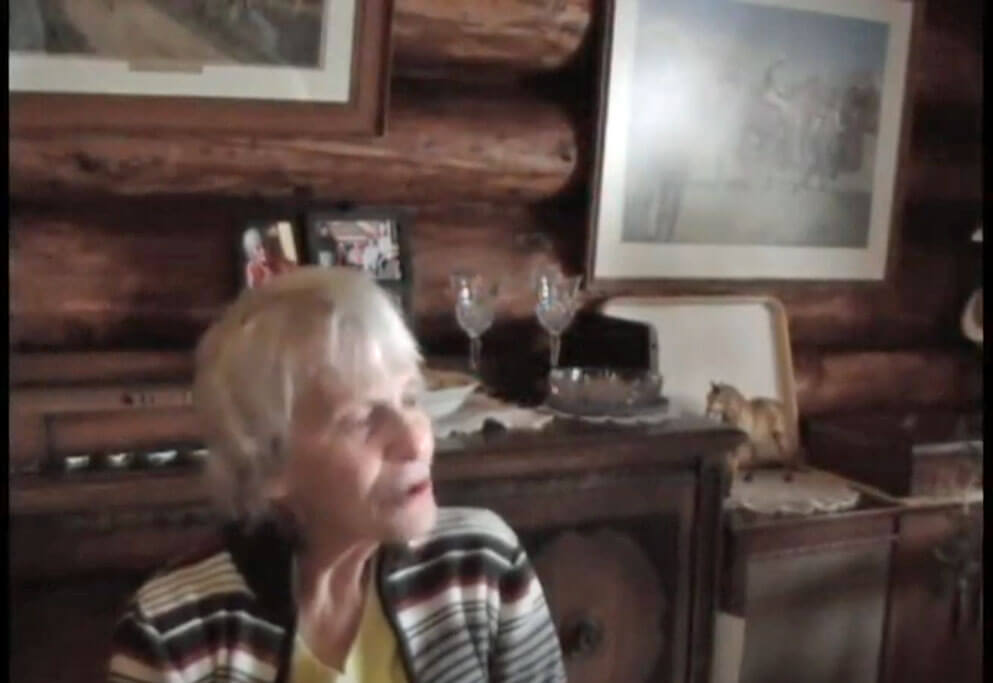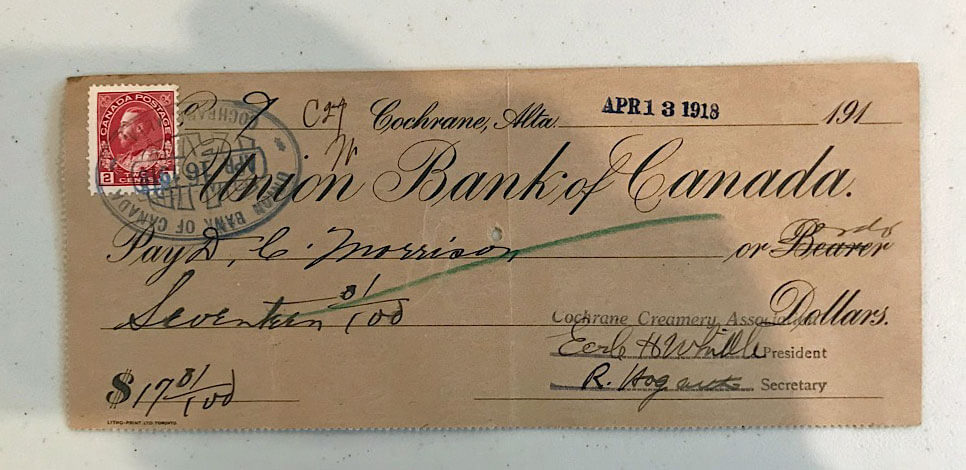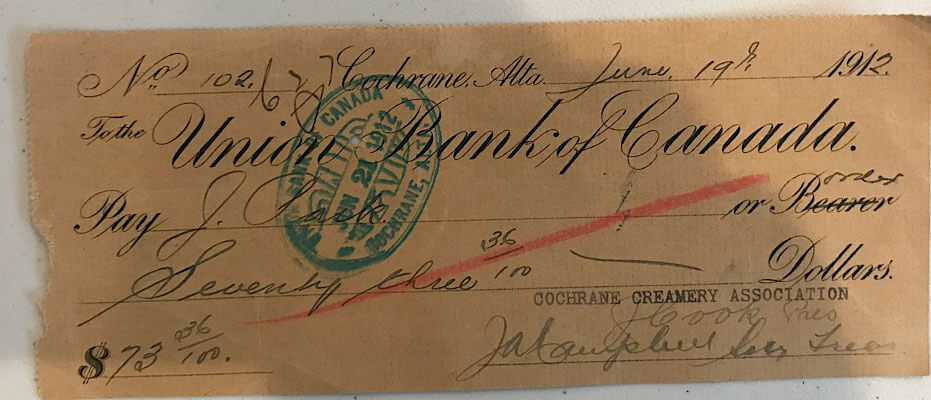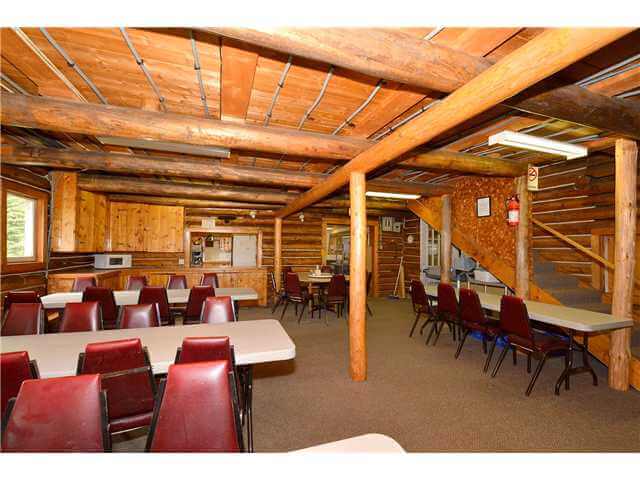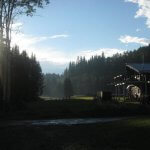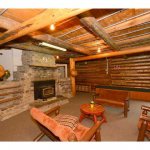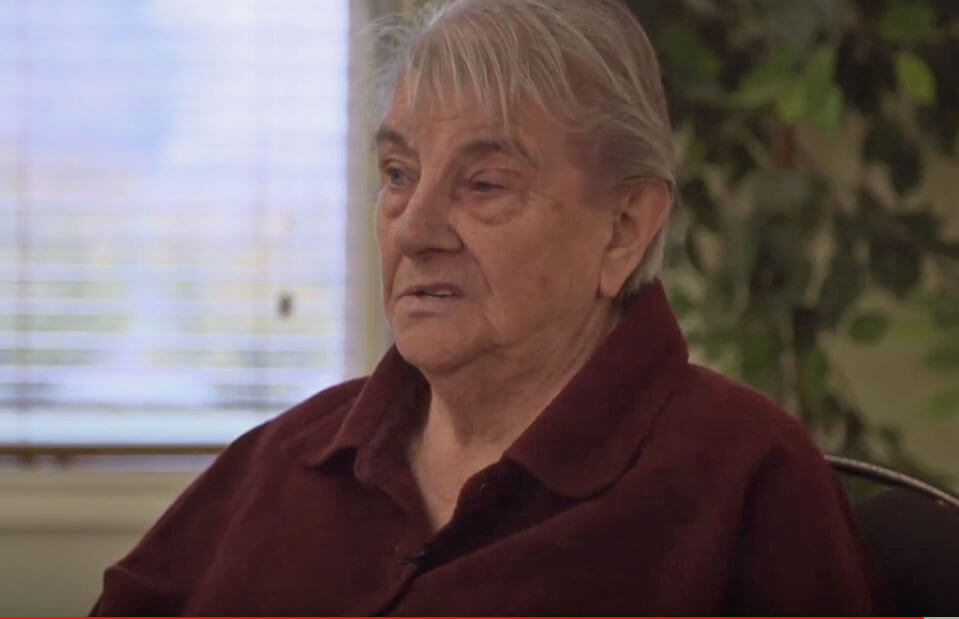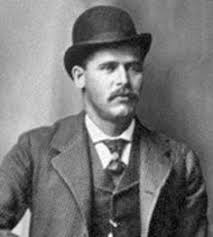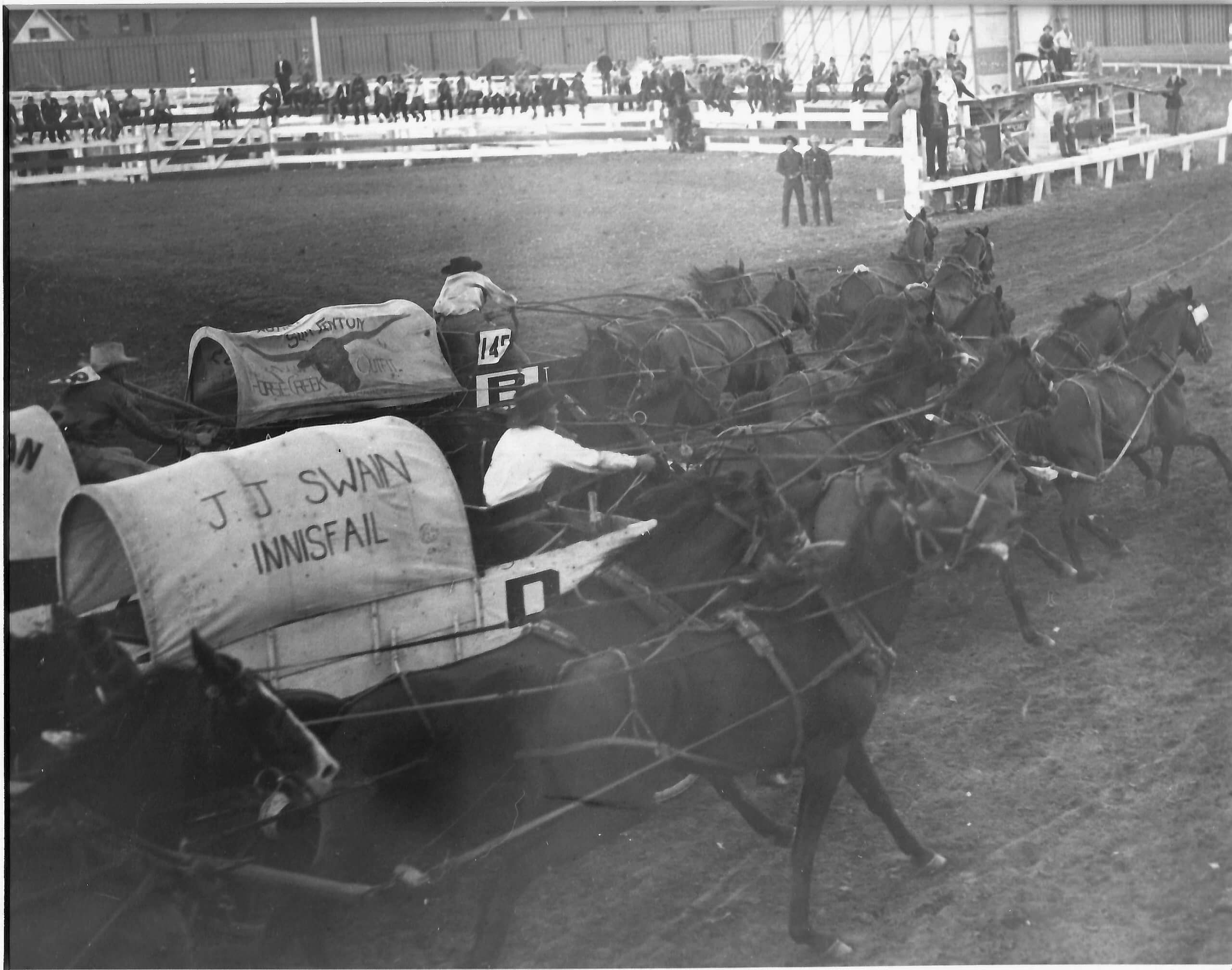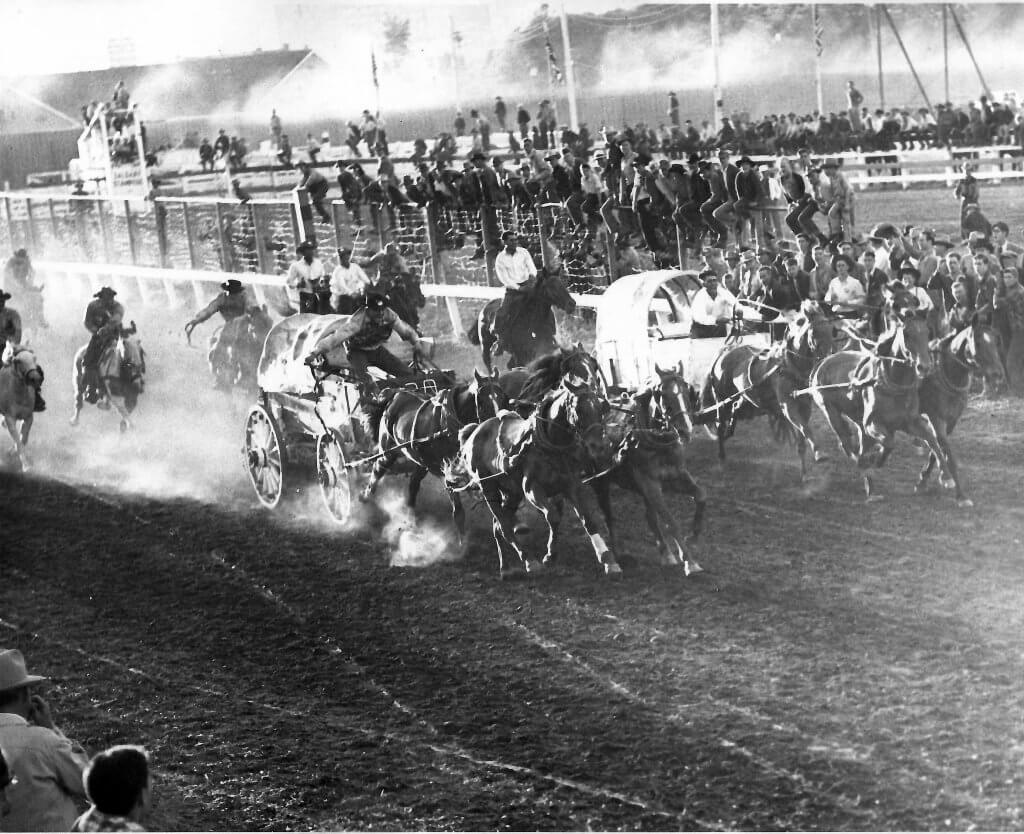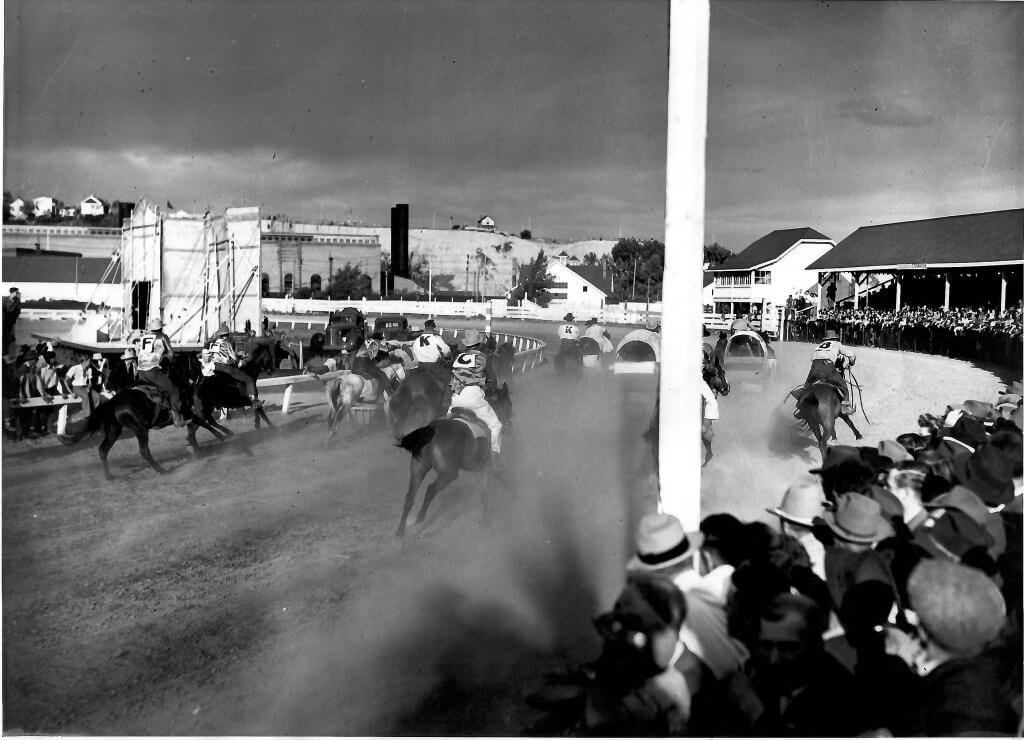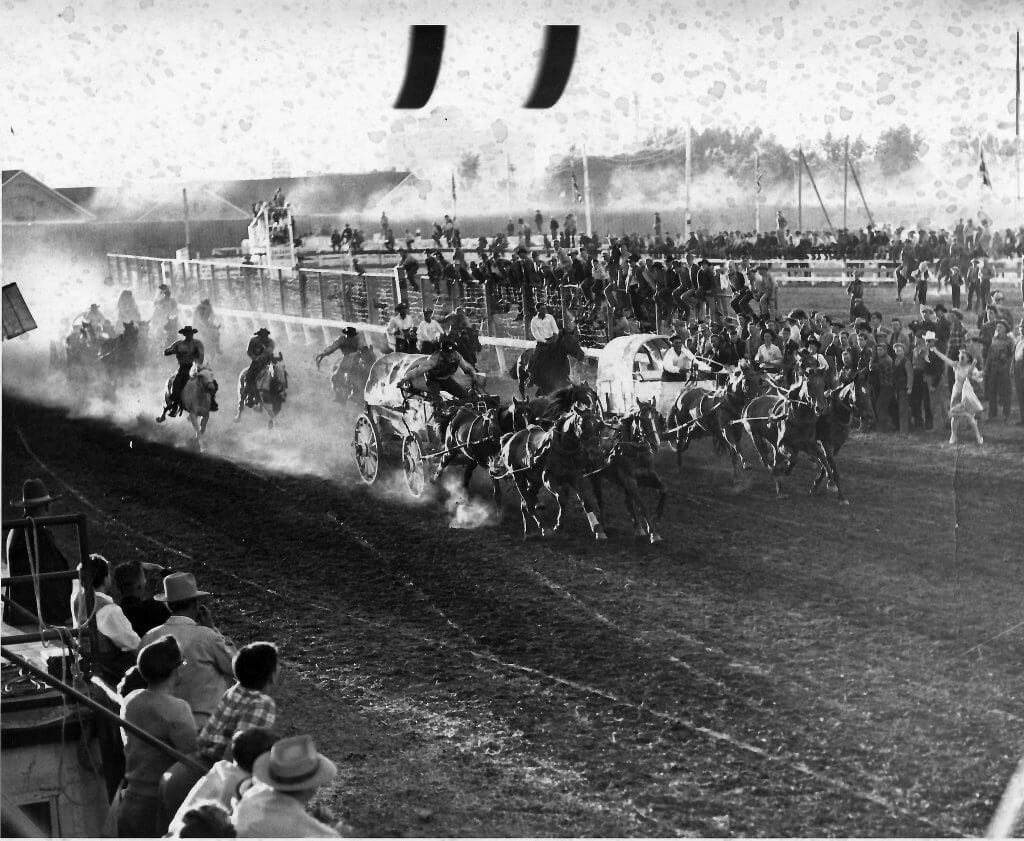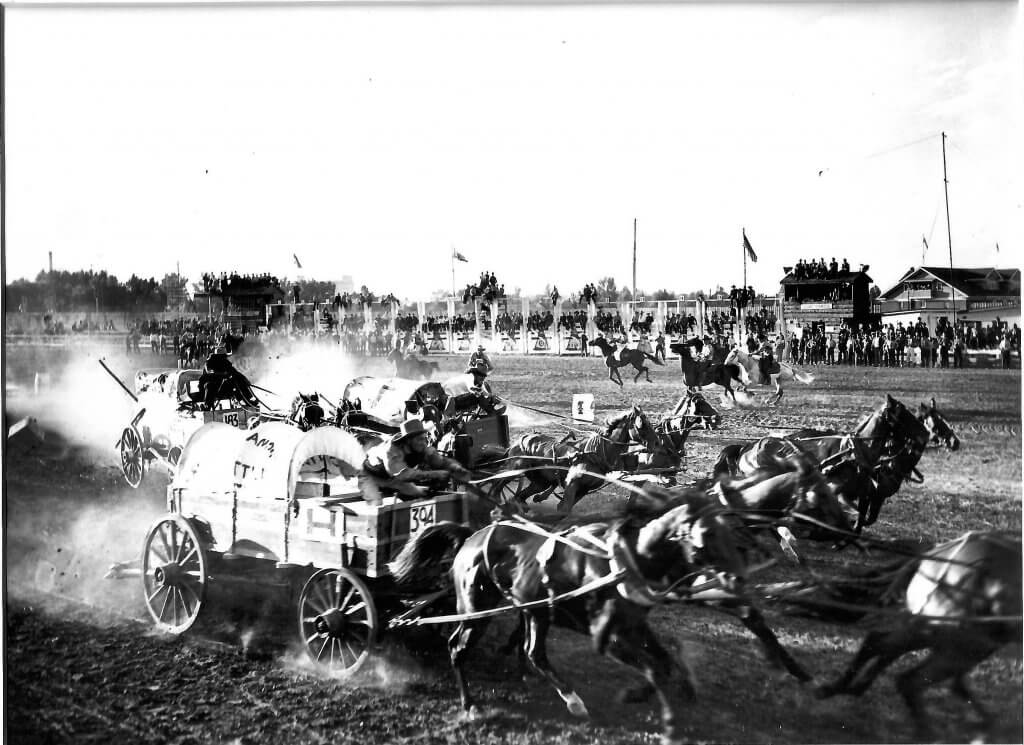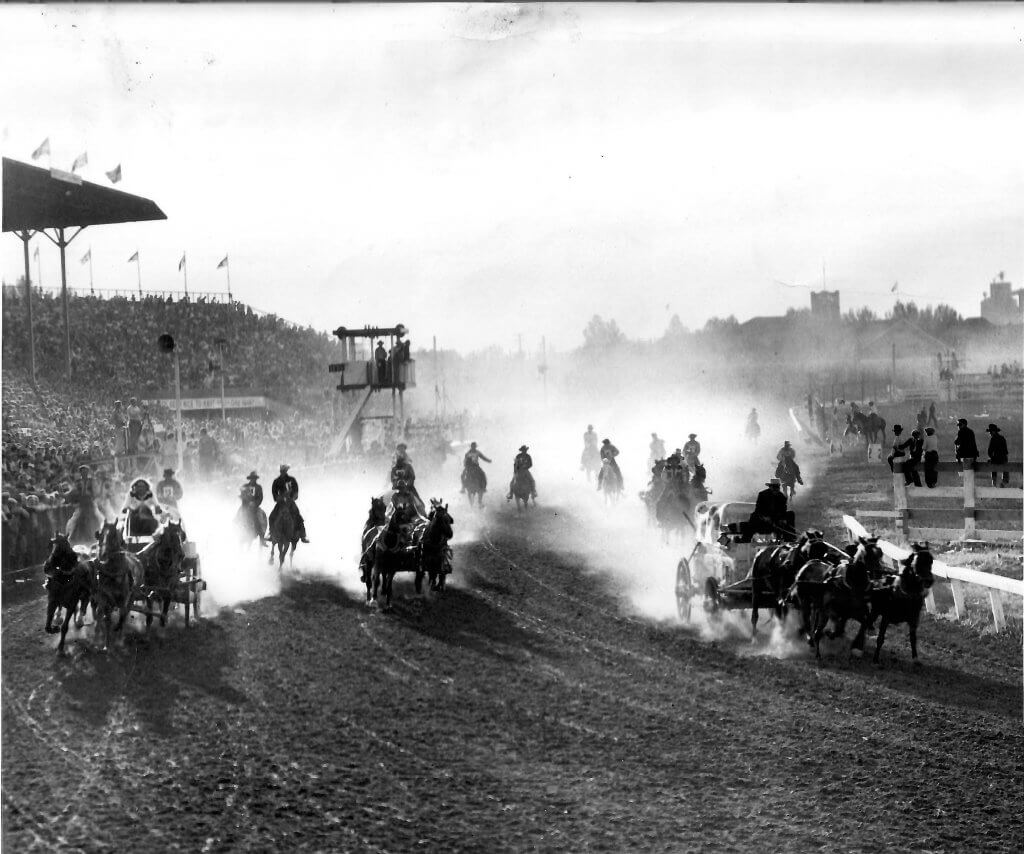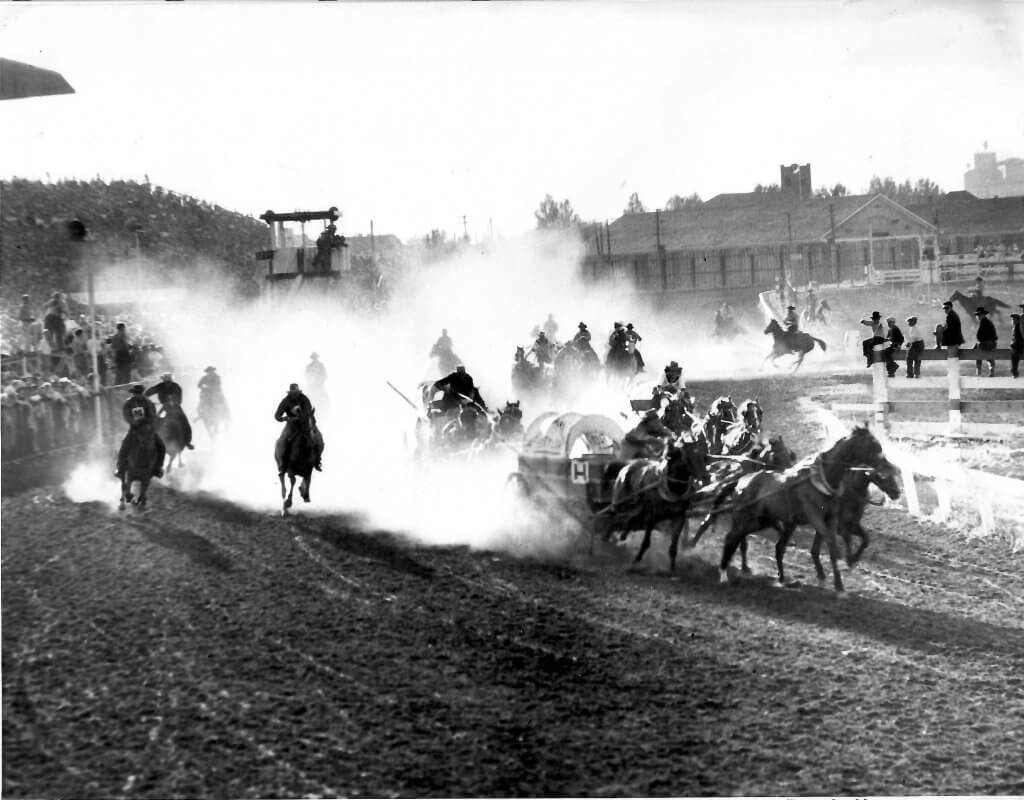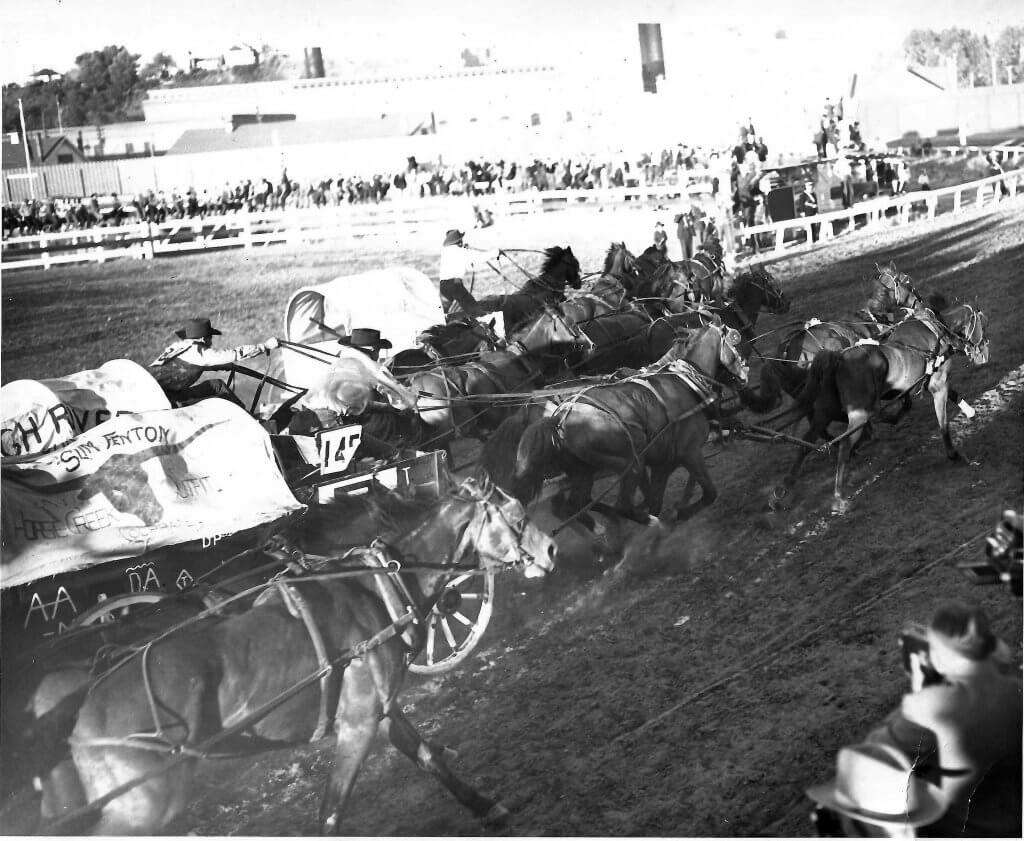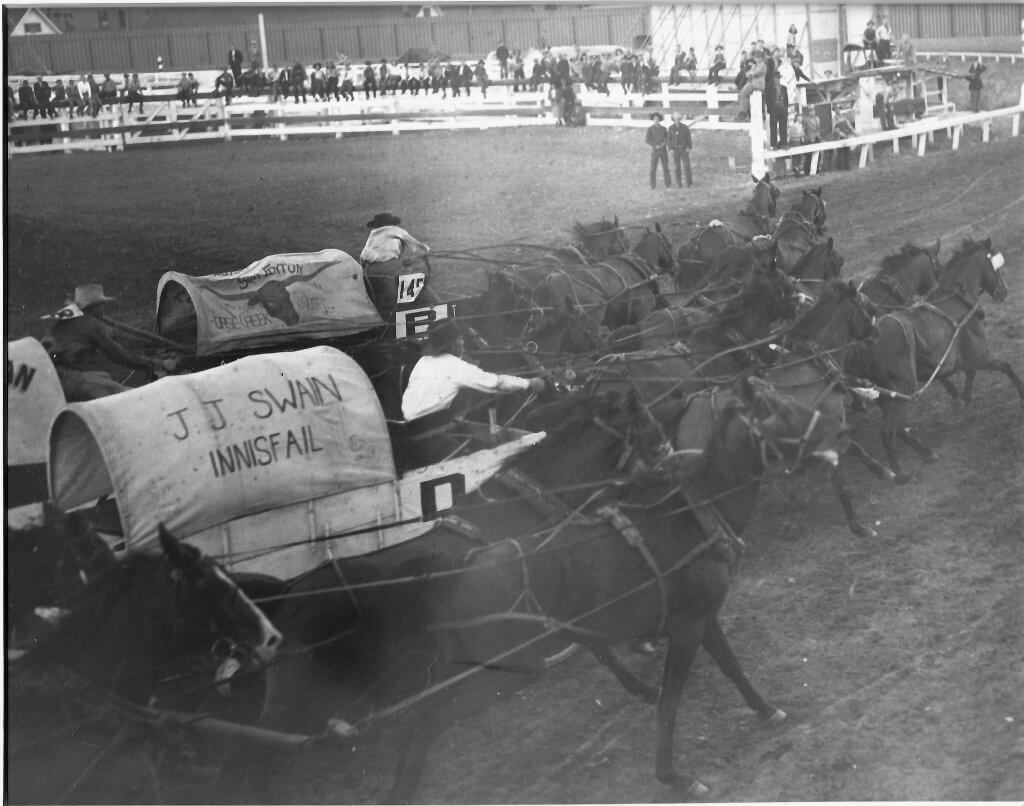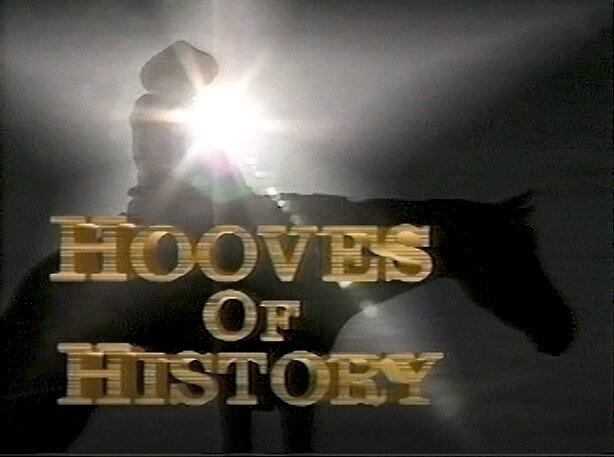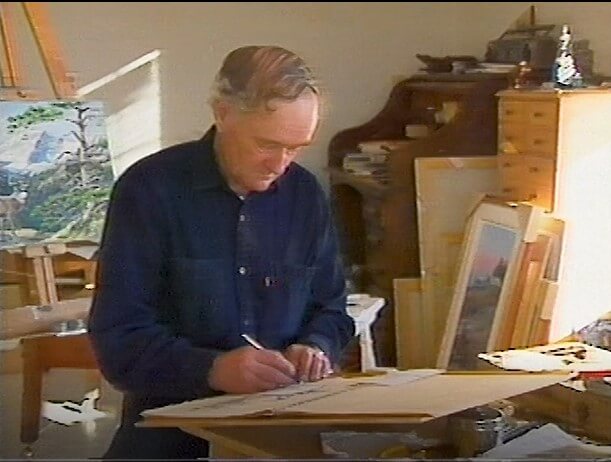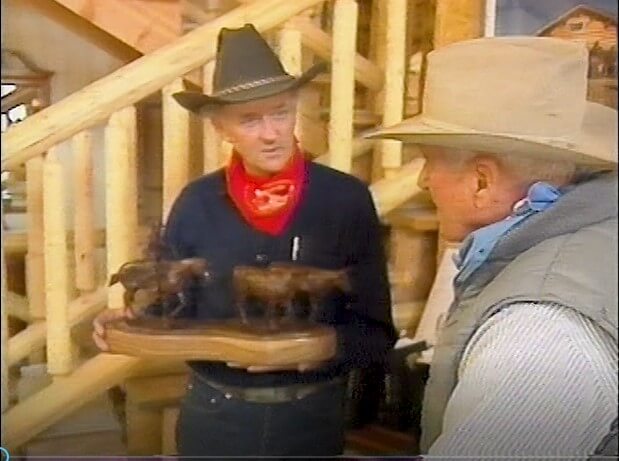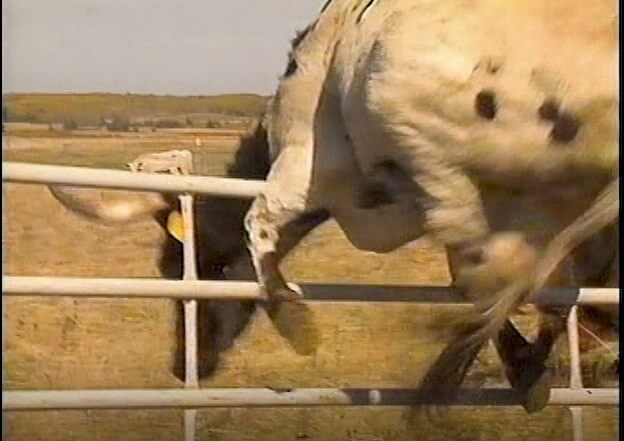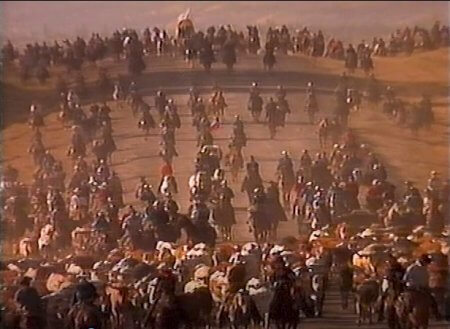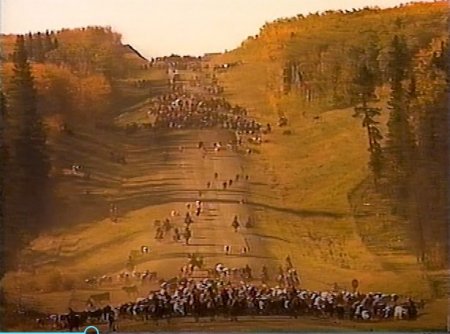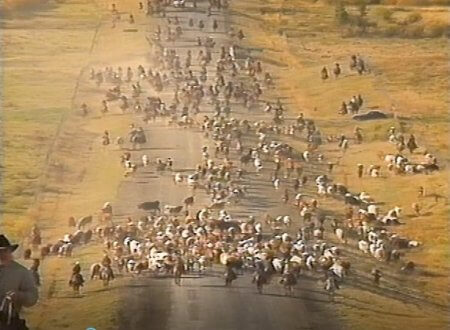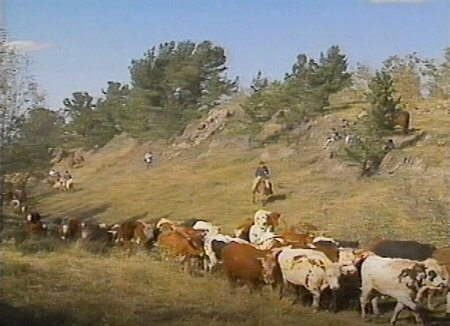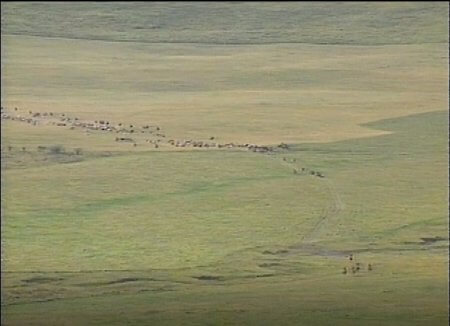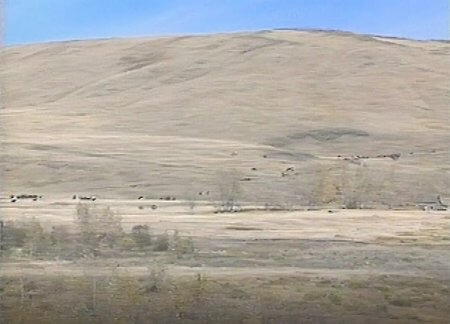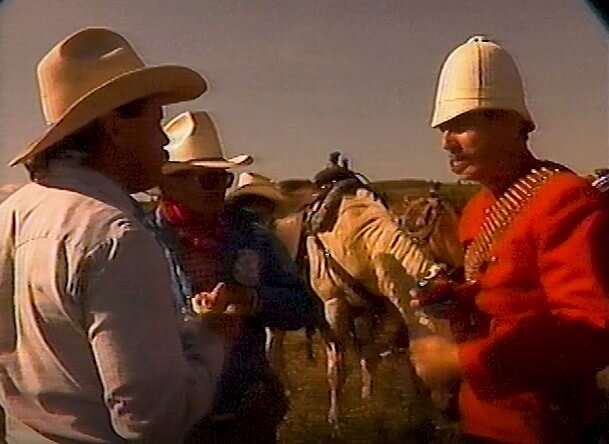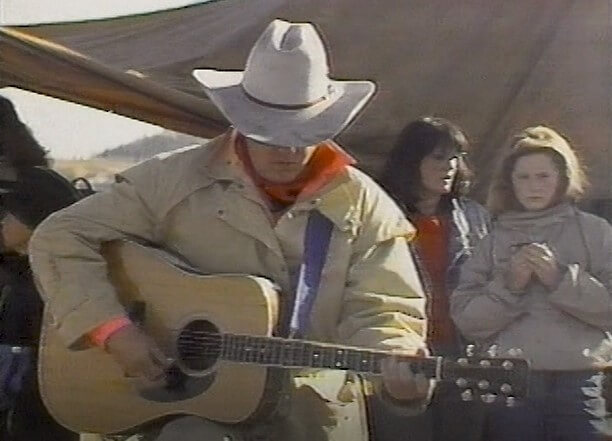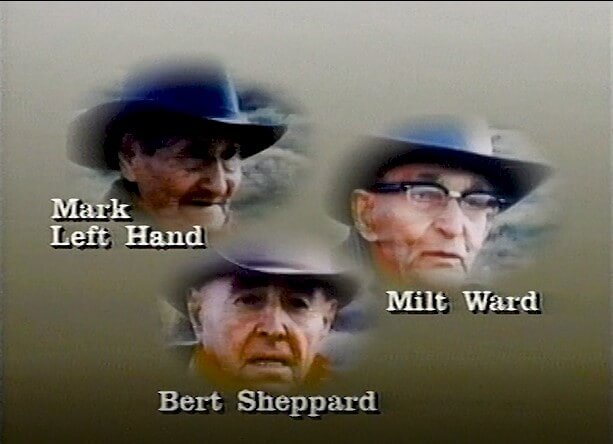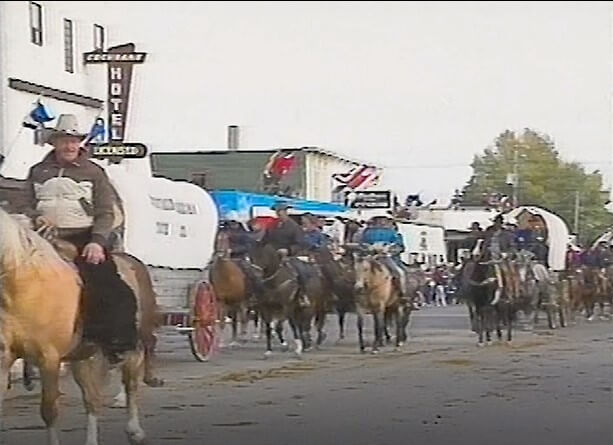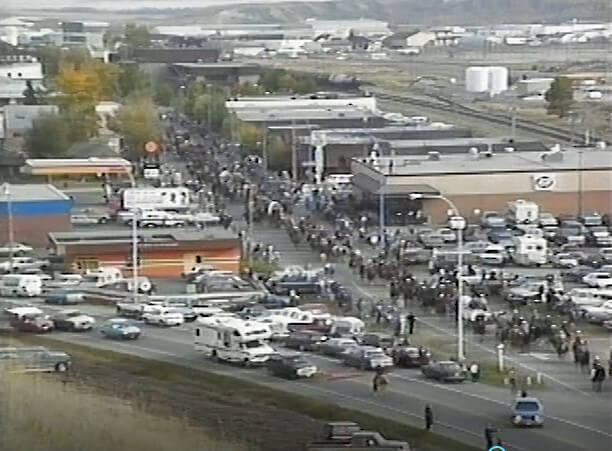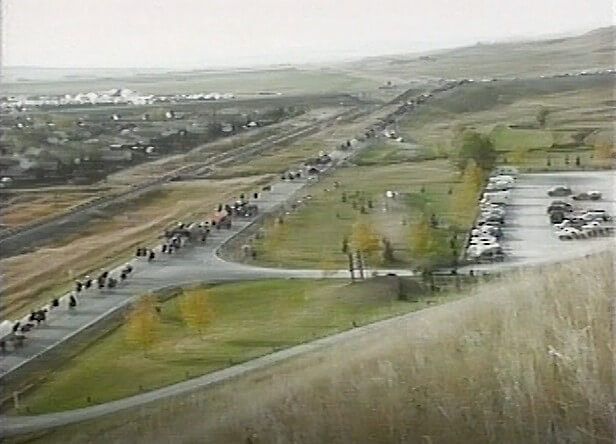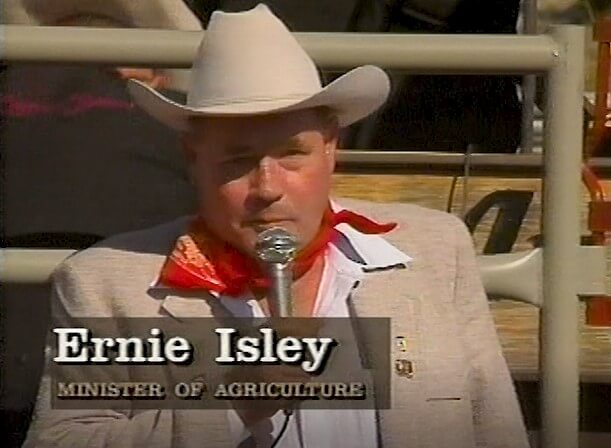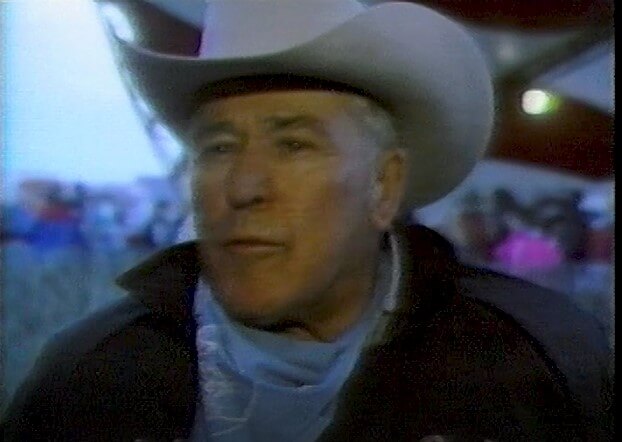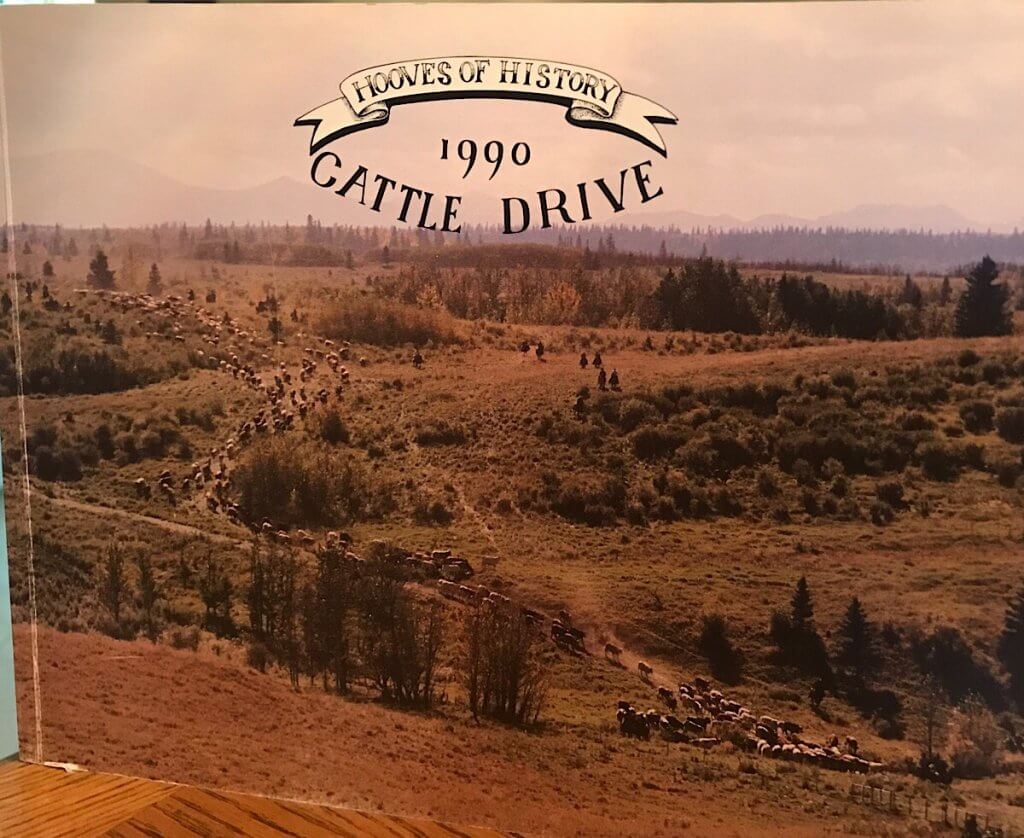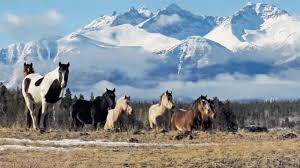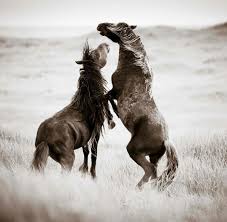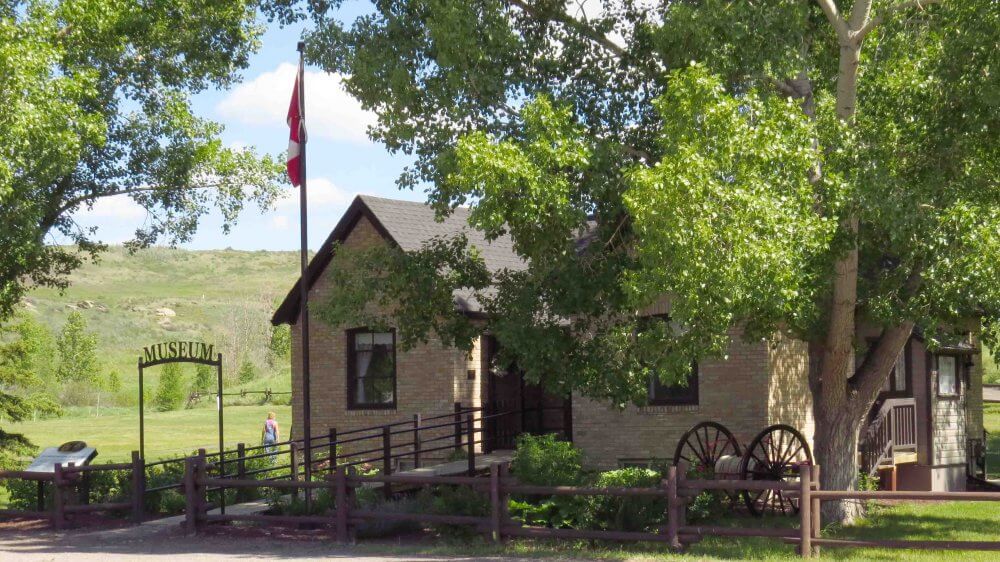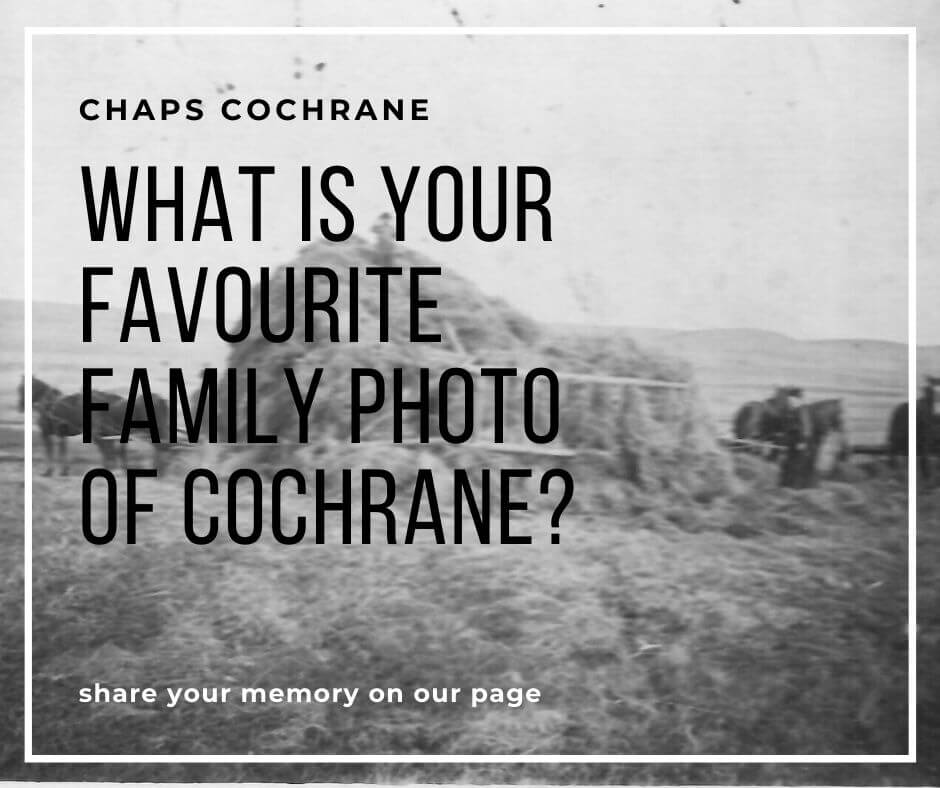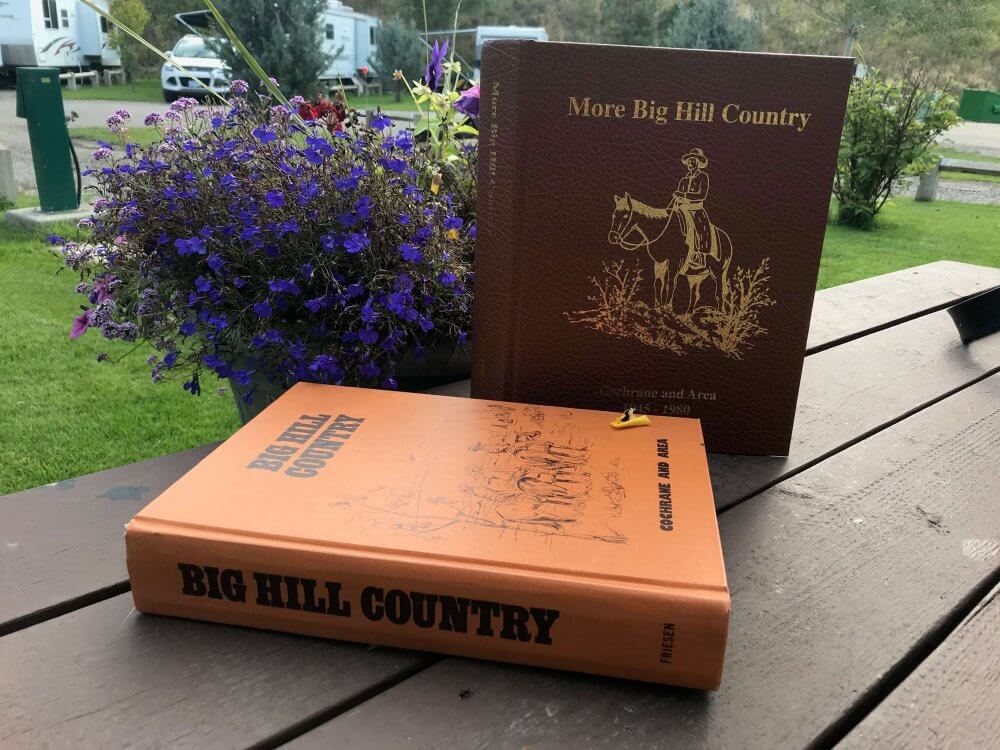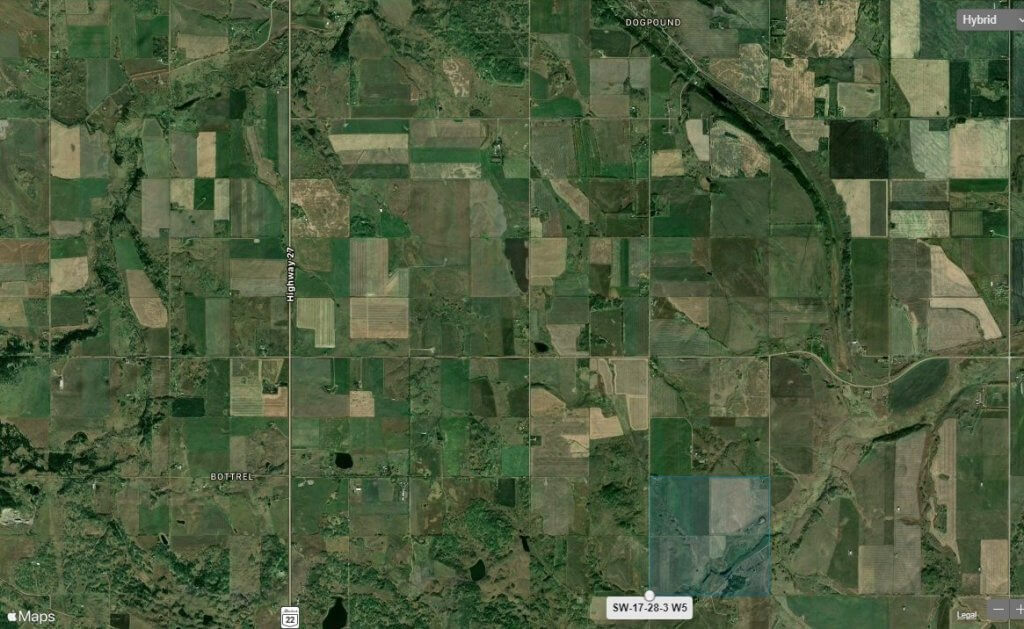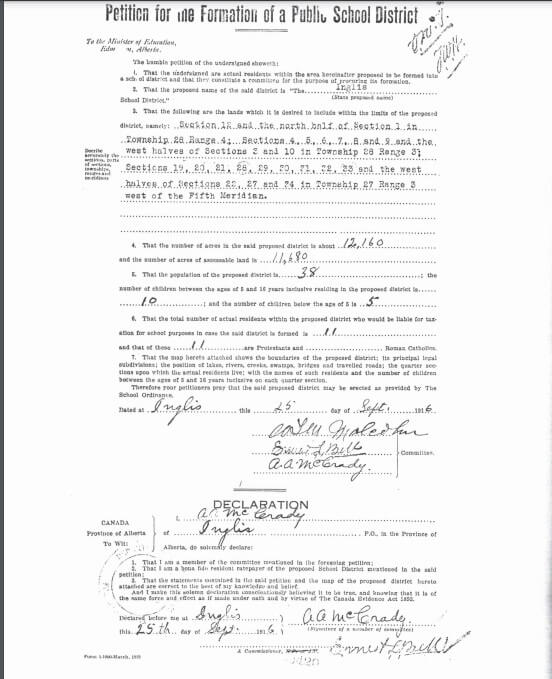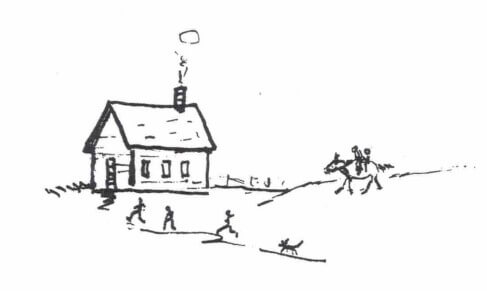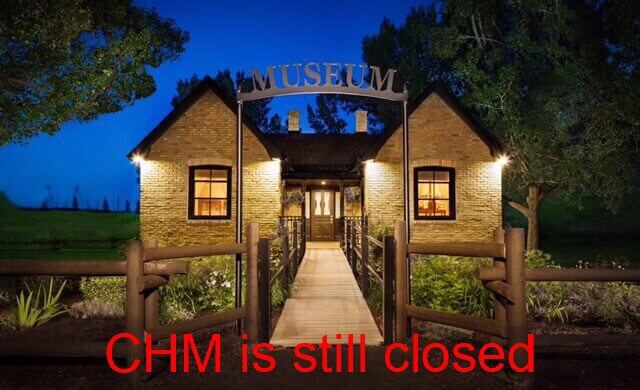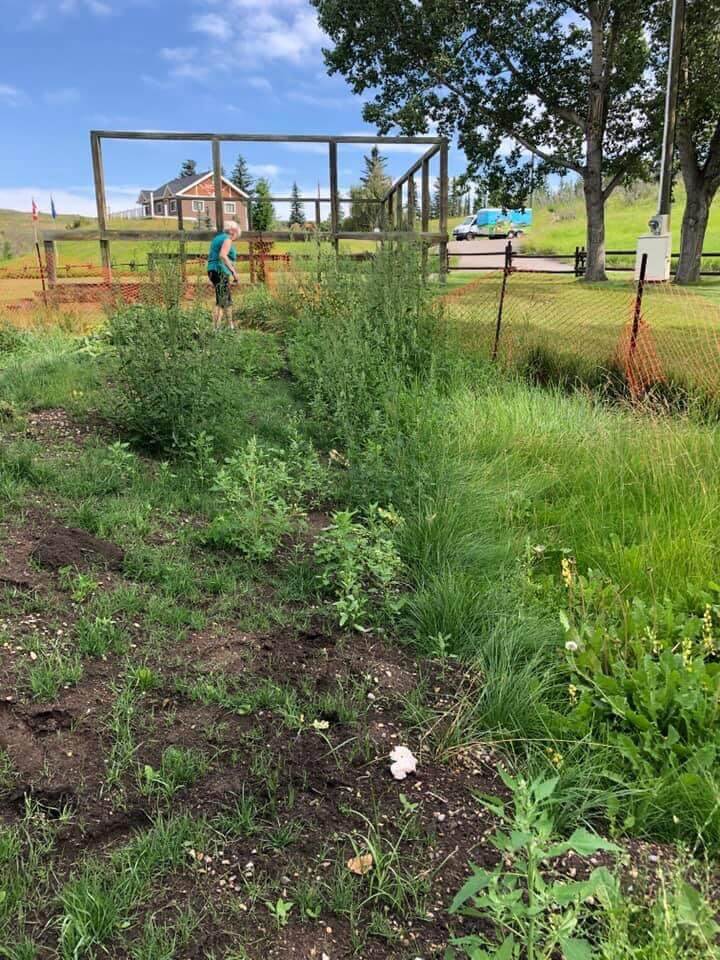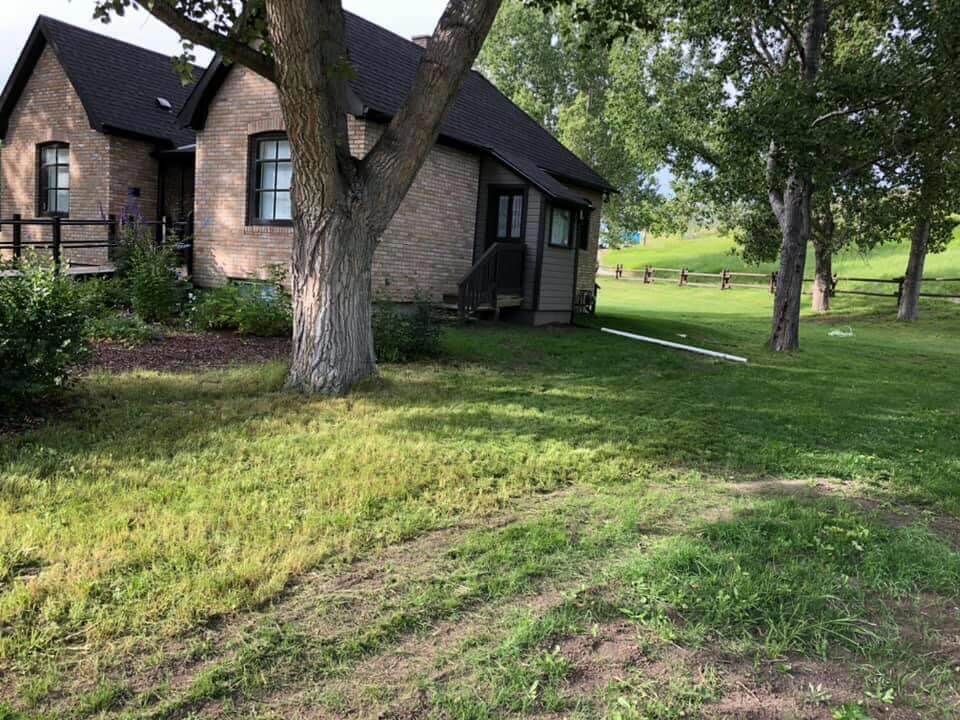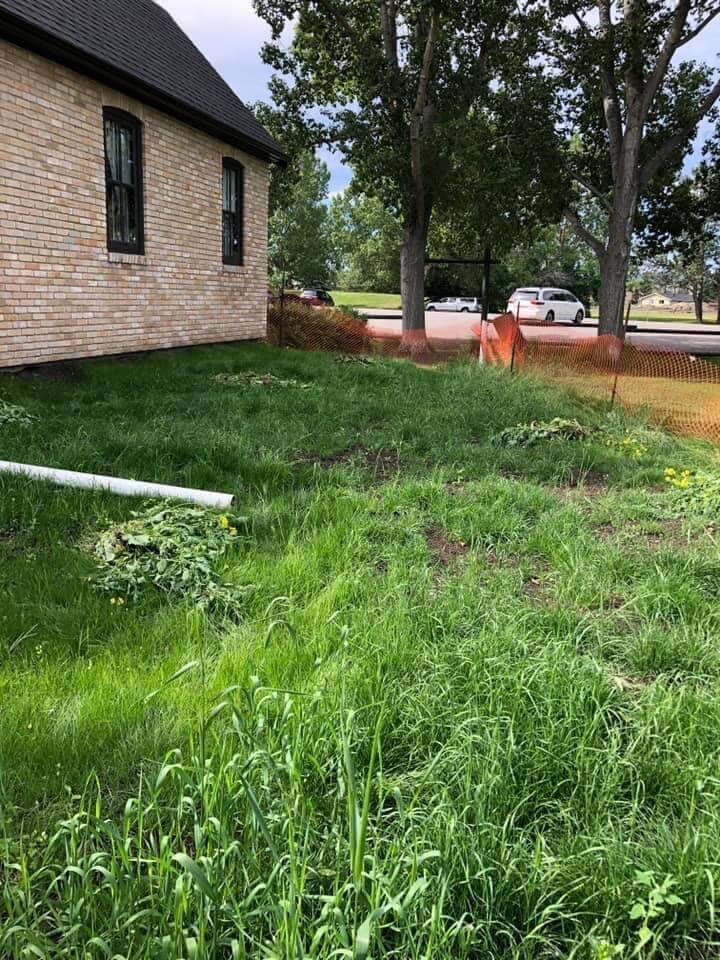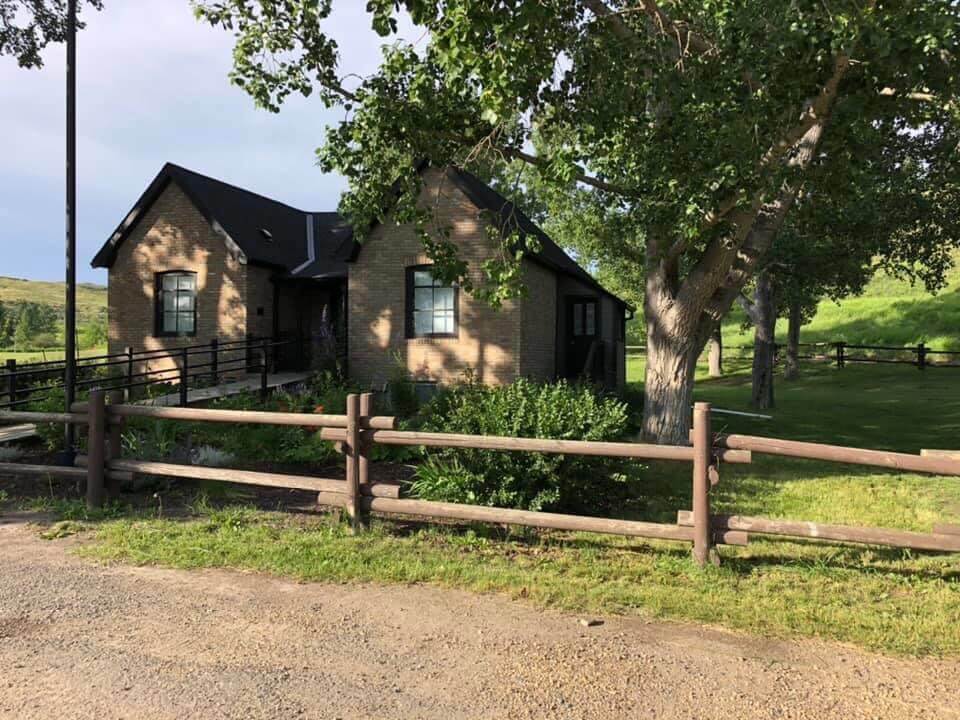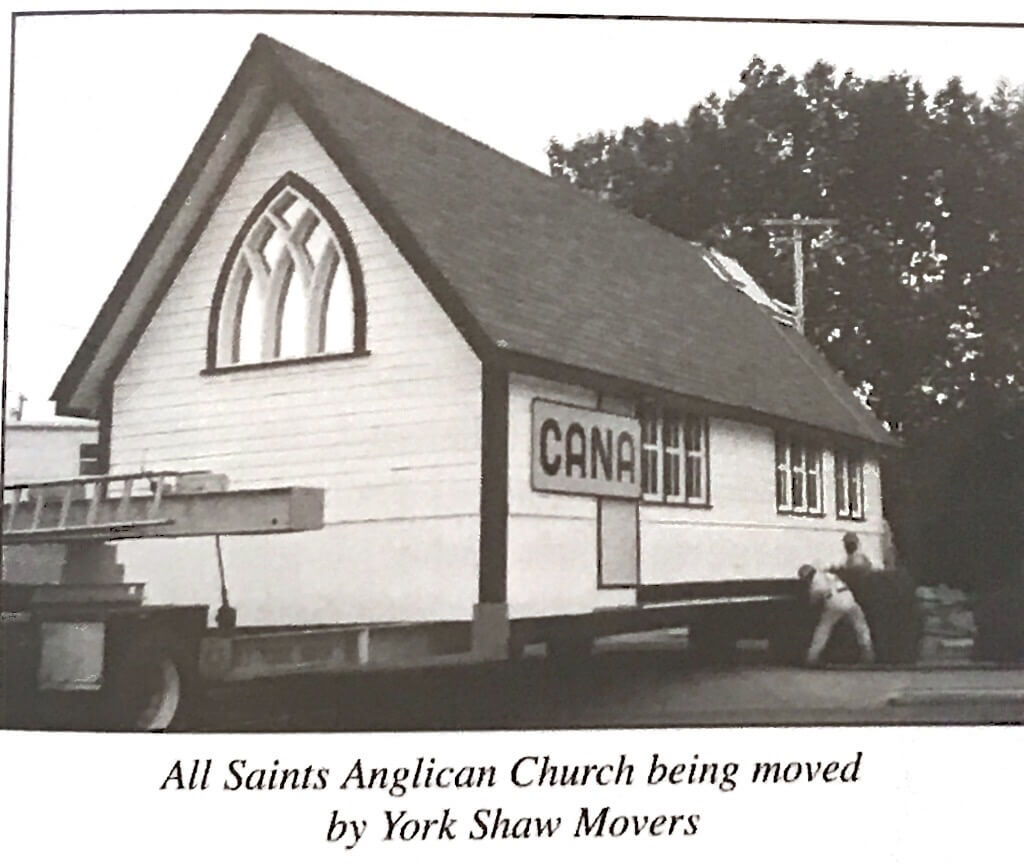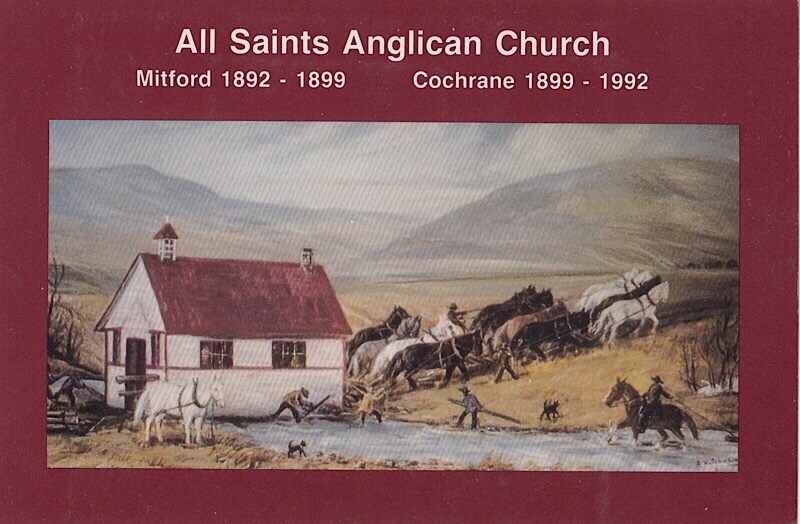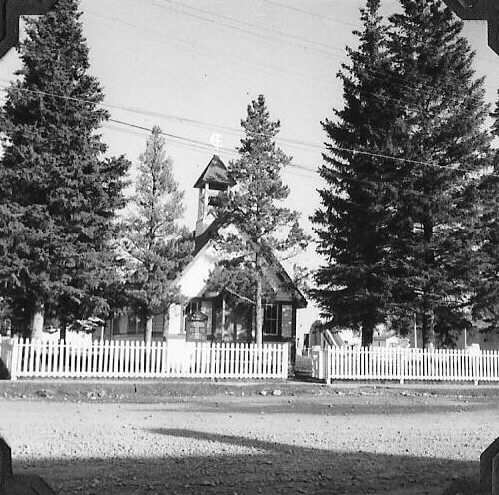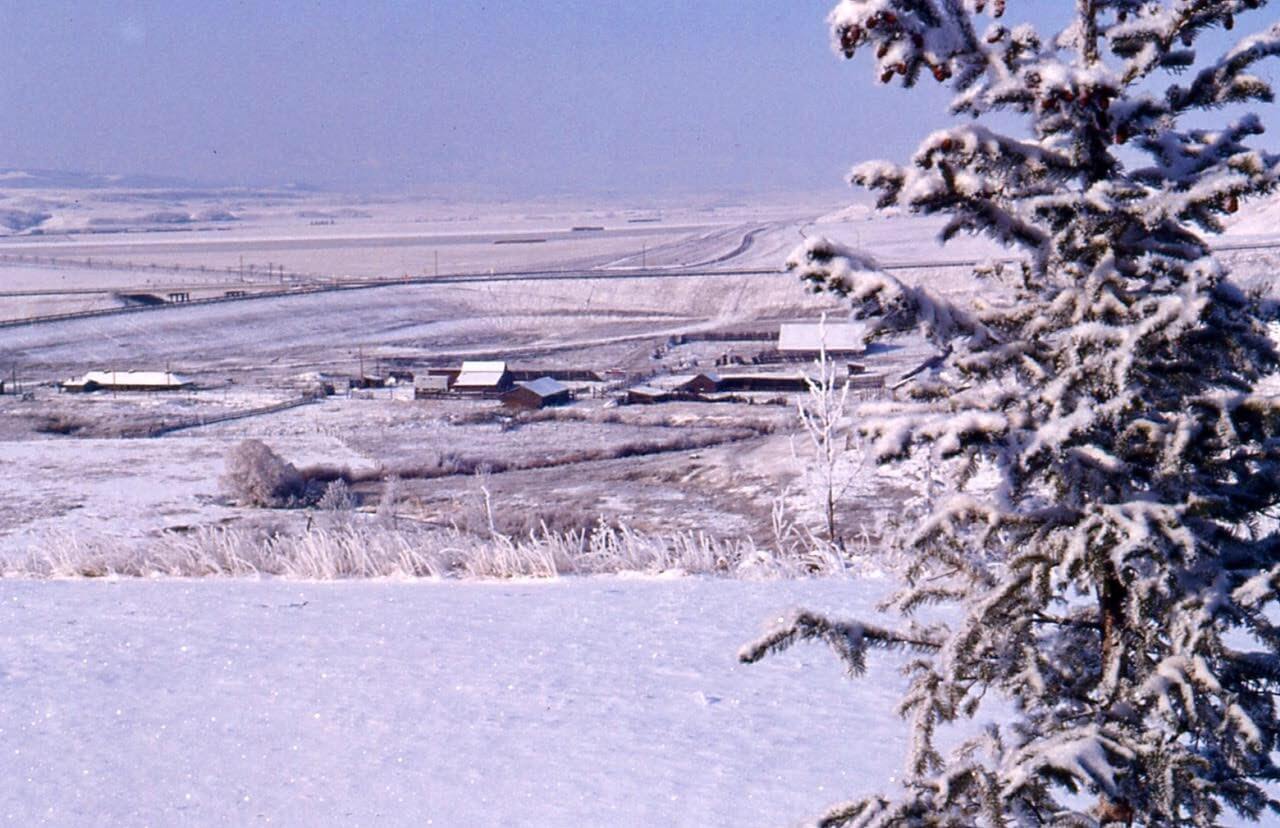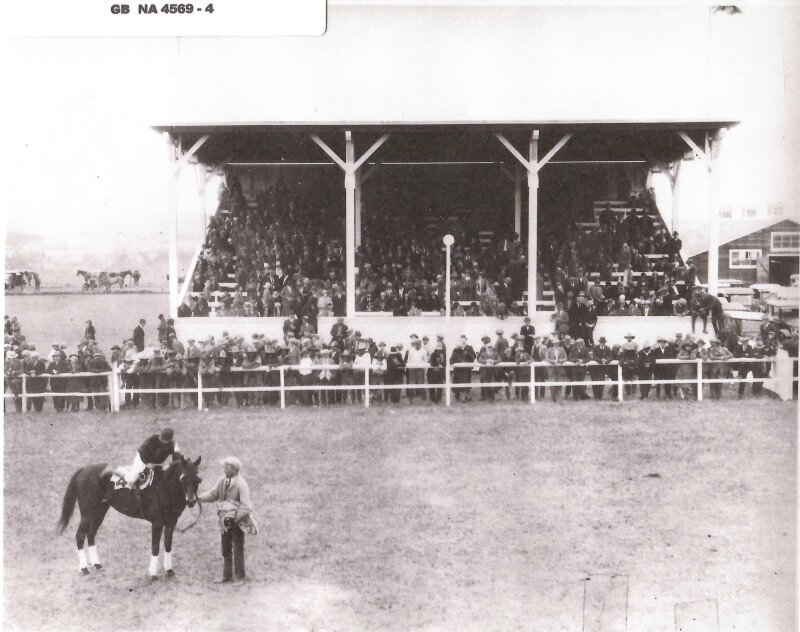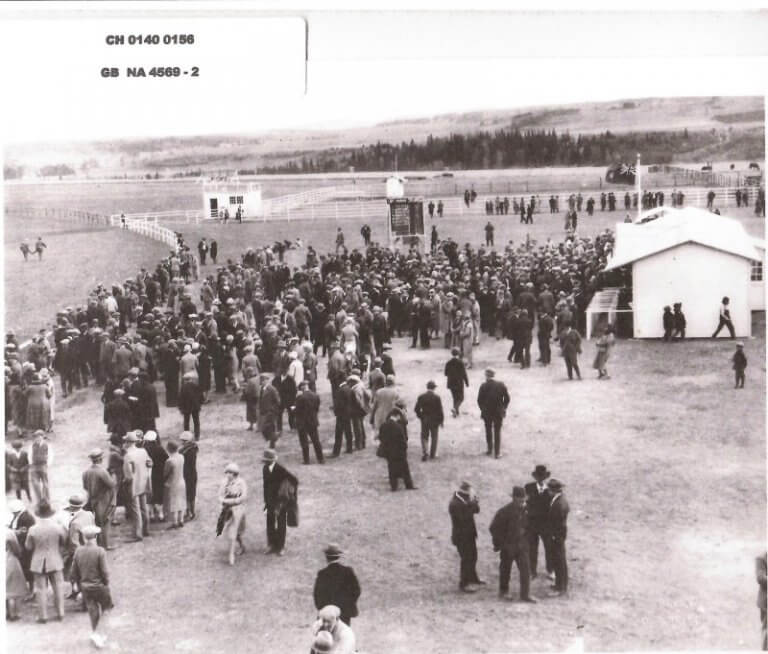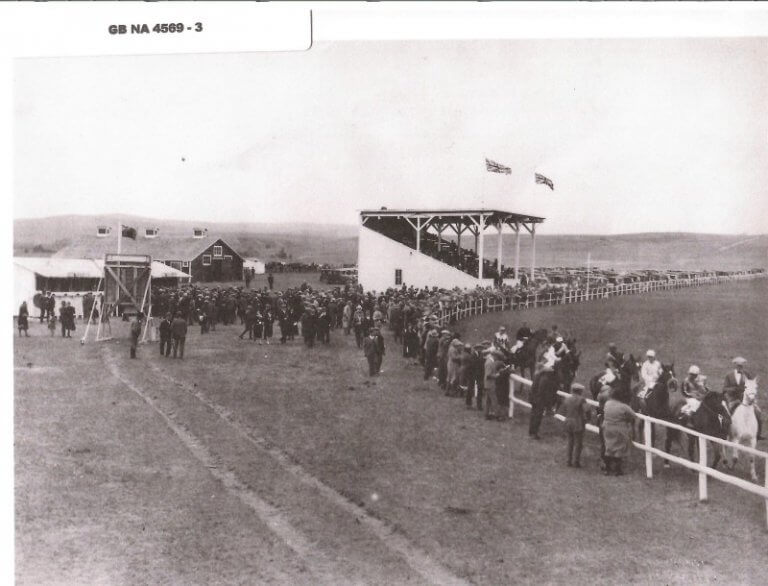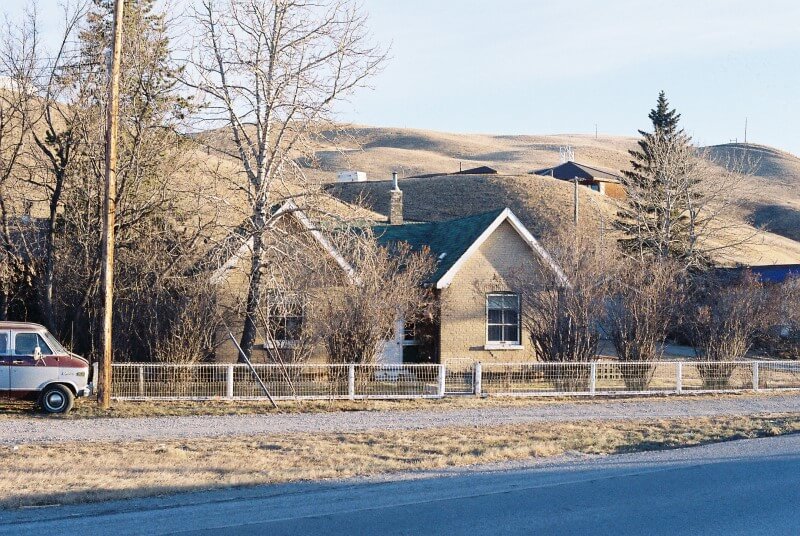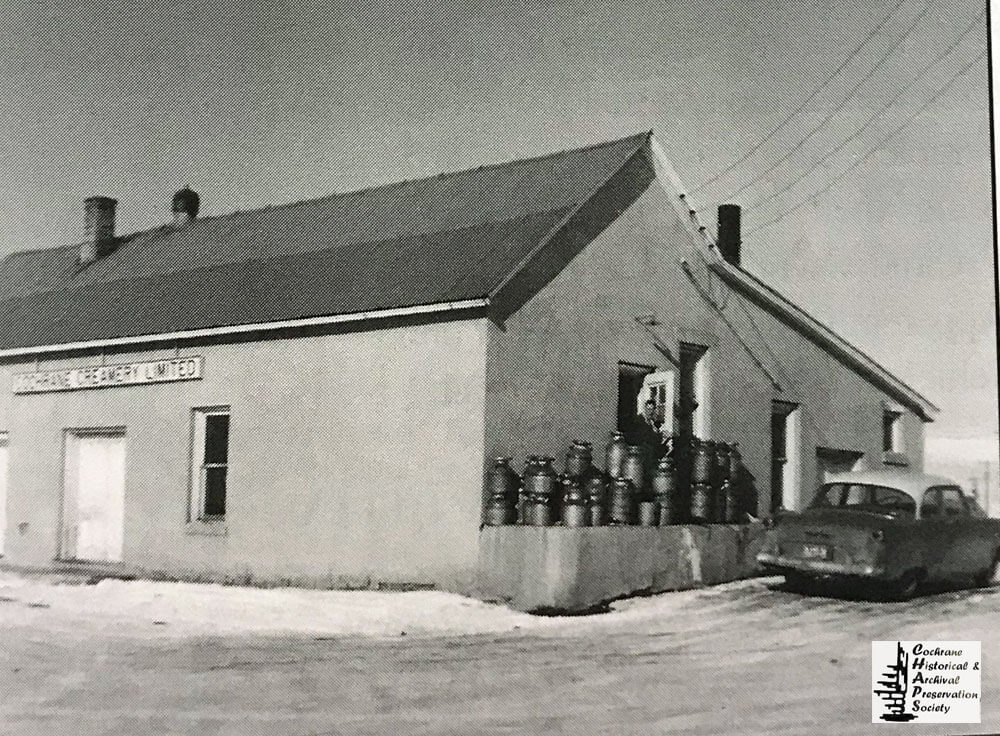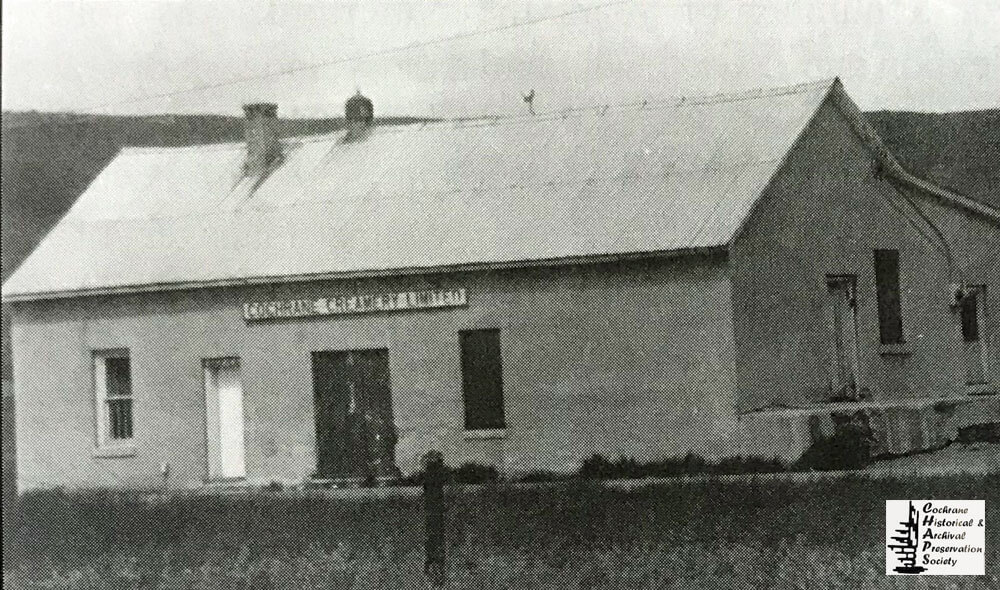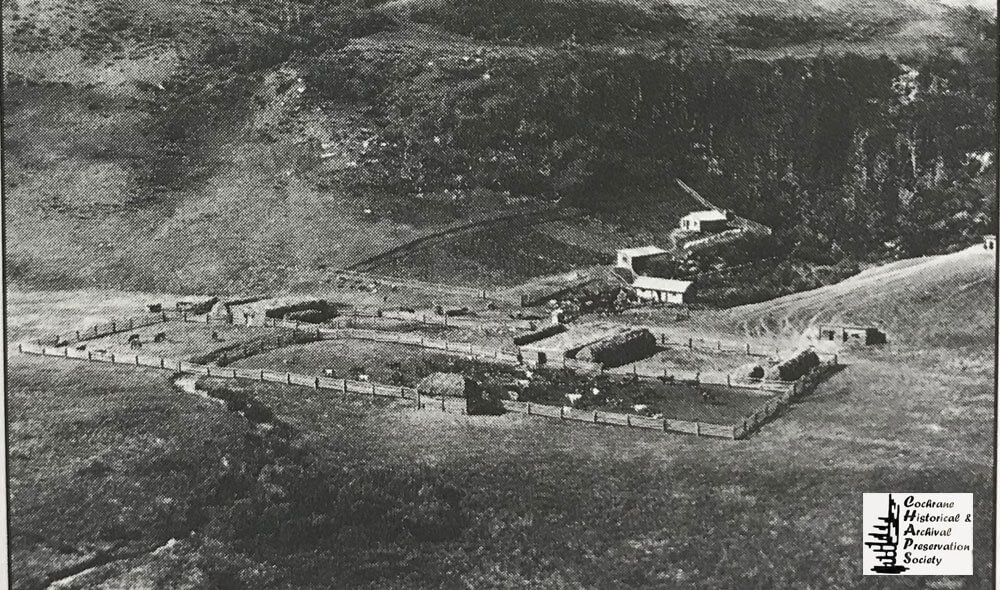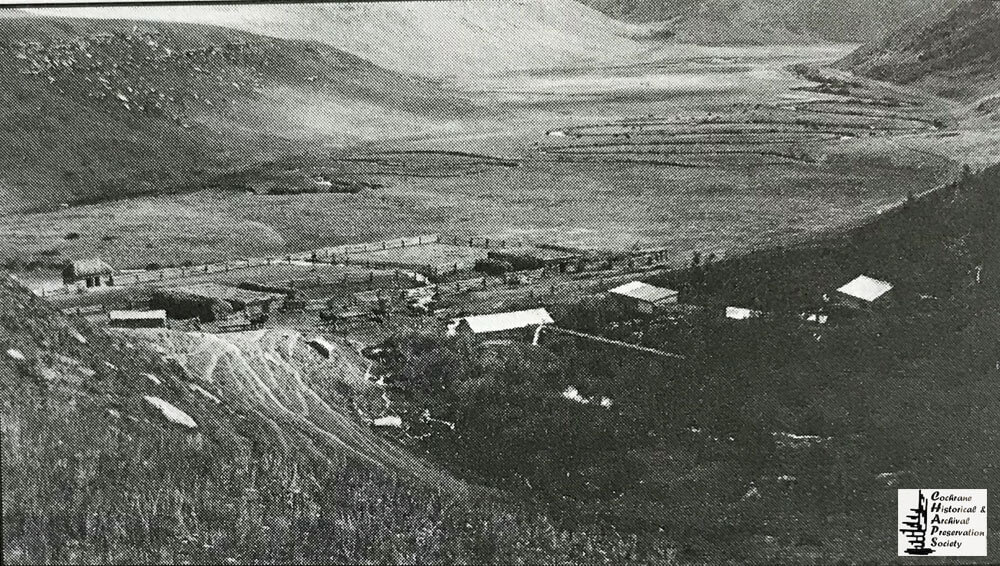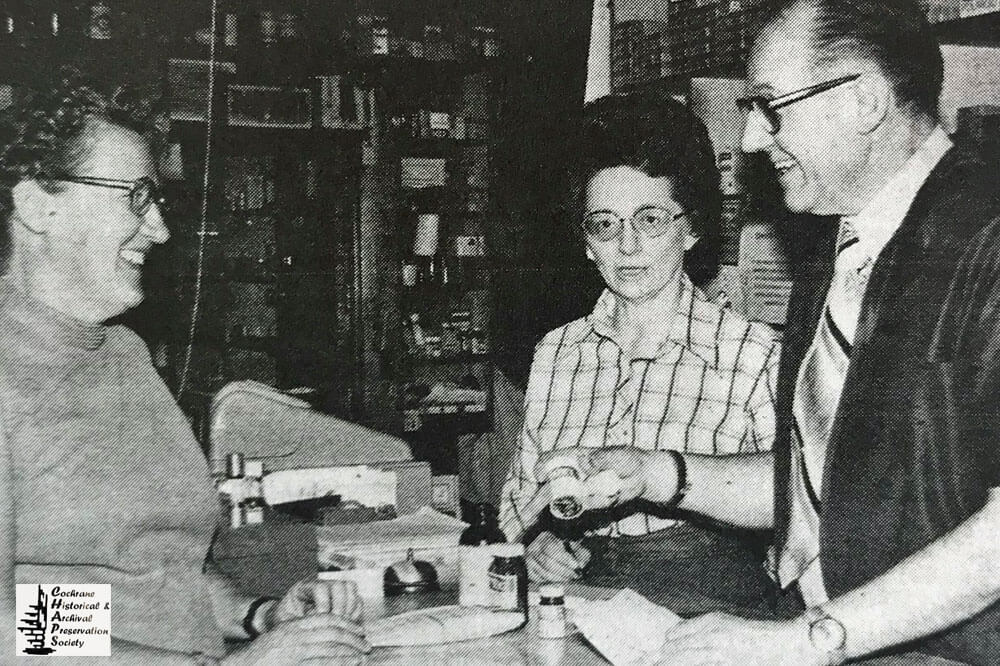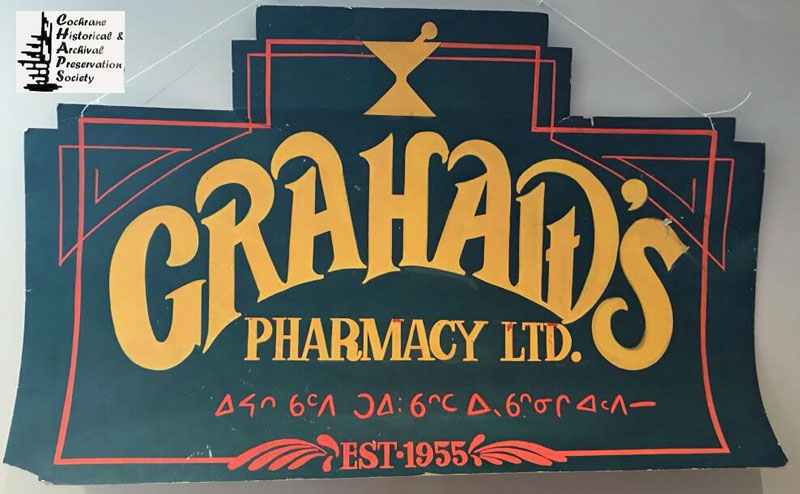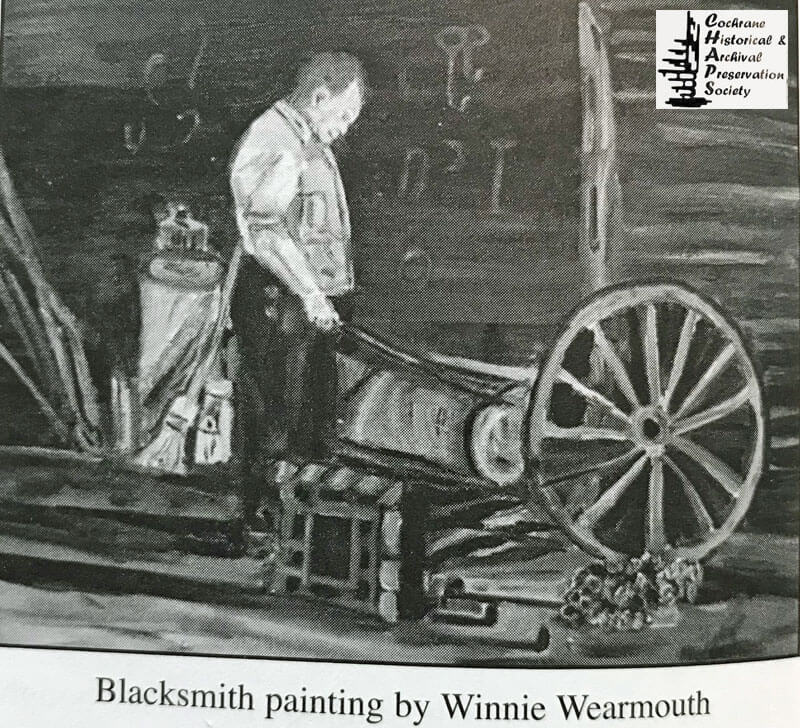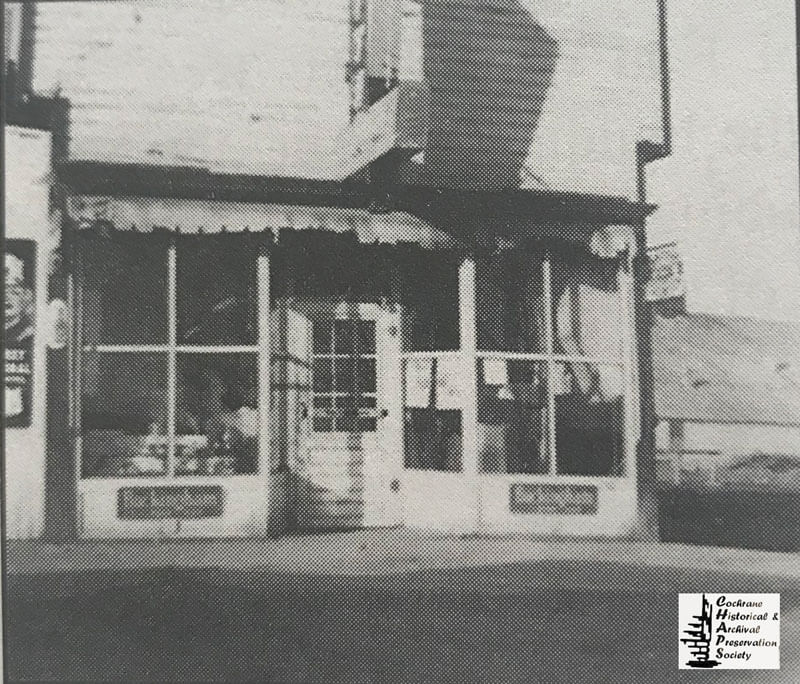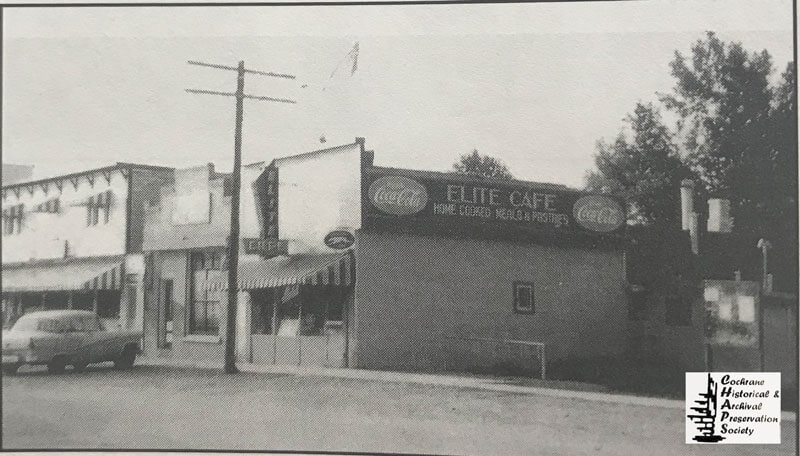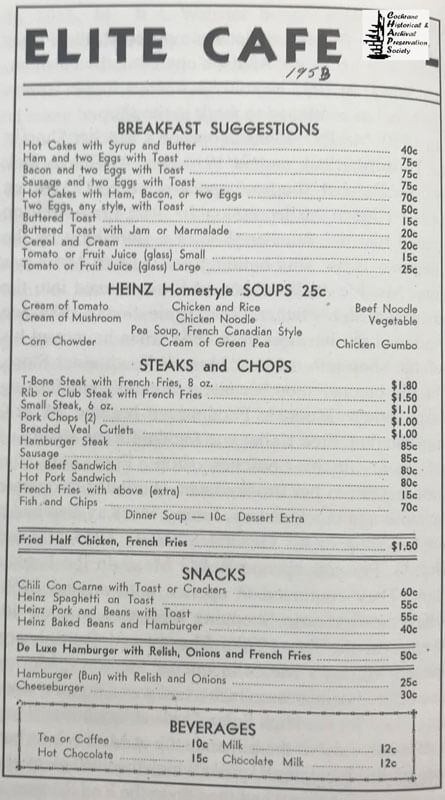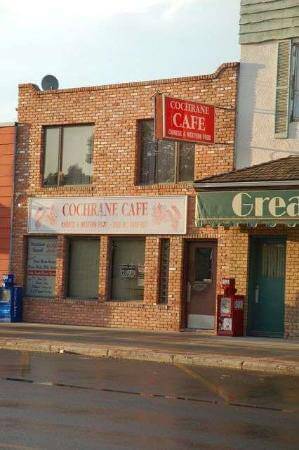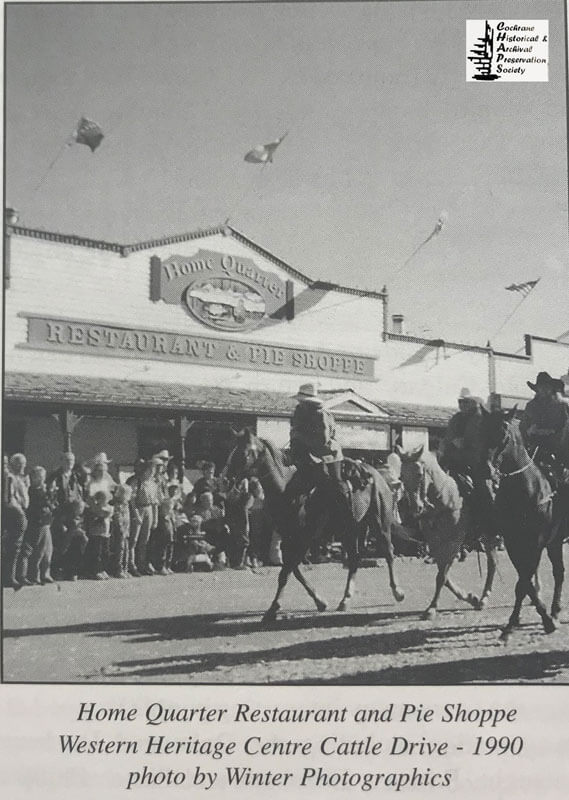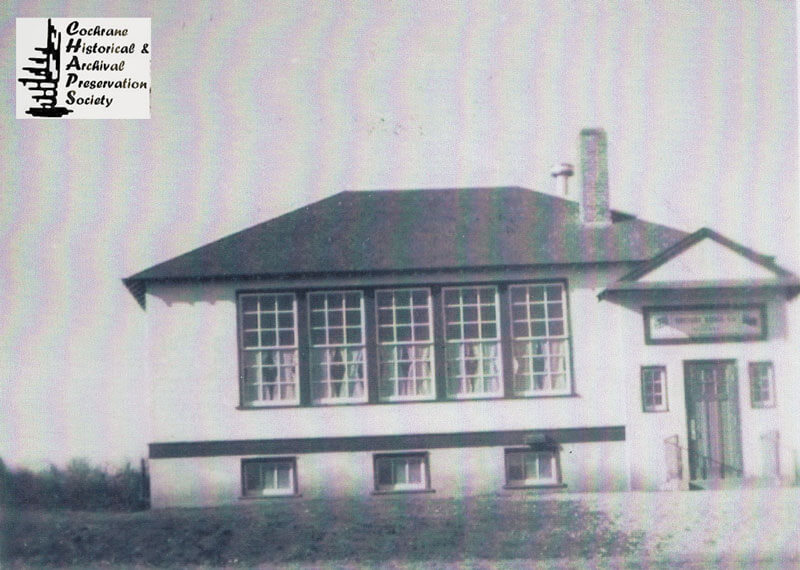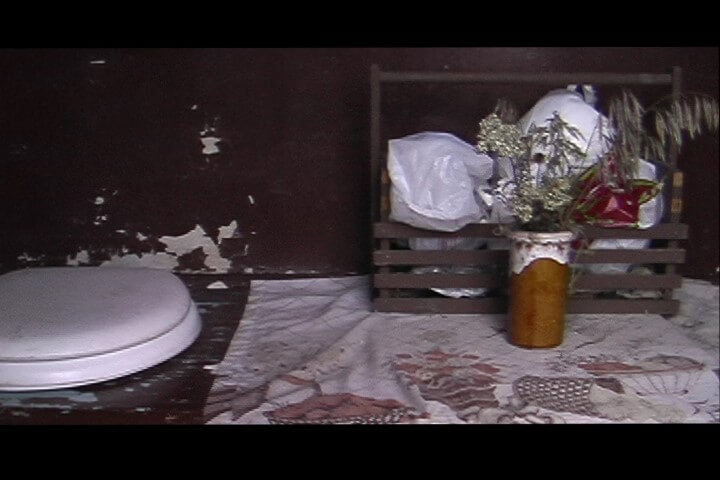In the early days in the Cochrane area, the spiritual needs of the community around the countryside were served by a visiting minister. Neighbours gathered in a local home and services were generally held by a son or a visiting minister who would arrive by horse and buggy or on horseback.
The Bow River, in the Cochrane, Mitford, Morley area were proved a bit of a disadvantage as there were no bridges to cross and everyone had to rely on certain areas that were safe enough to ford and that the river was low at the time. However, it appears that the people met regularly in various homes to worship, whether the Minister or Priest was present, or not.
With the growing community of Mitford, it appears that people were meeting in a building or home at Mitford. It was decided to petition the Bishop of Calgary for permission to build an Anglican Church at Mitford, Rupert’s Land.
Thus Lady Adela Cochrane (no relation to Cochrane Ranche) and other residents of the nearby district began the one hundred and fourteen-year history of All Saints Anglican Church in 1891.
“To the Right Reverend Father in God, Cyprian, by Devine Permission, Bishop of Calgary:
“The humble petitions of the Rev. W.F. Webb, BA, Curate-in-Charge, Thomas Cochrane, Lady Adela Cochrane, Robert Cowan, Frank White, W.D. Kerfoot and others, resident of the mission district of Mitford, Alberta, N.W.T., whose names and signatures are hereunto subscribed, for themselves, and in the name of the members of the Church of England in Rupert’s Land residing in and around Mitford … members of All Saints Congregation, within Your Lordship’s Diocese and jurisdiction showeth:
“That a certain parcel of land containing half an acre, as fully described in deed of same, has been given absolutely and entirely by Thomas B. Cochrane and William Brabizon Lindsay Toler, Earl of Norbury, Trustees of the Canada Northwest Coal and Lumber Syndicate Limited, for purposes of a burial ground and erection of a church in connection with the Church of England in Rupert’s Land and are desirous to have it set apart from all profane and common use whatsoever.
Your Petitioners, therefore, in their own names and the names of the constituents, do humbly beseech Almighty God to accept of this their sincere intent and purpose and do humbly pray that your Lordship will be pleased to separate the said portion of land from all profane uses and to dedicate and consecrate the same for the purposes of Christian burial in connection with the Parish of All Saints Mitford.”
“And your petitioners will ever pray.”
The following signatures are listed on the petition: W.F. Webb, B.A., Thomas B.H. Cochrane, Adela Cochrane, Adriana Macbean Kerfoot, W.D. Kerfoot, Ella M. Cowan, Robert W. Cowan, F. White, H.C. Hickling.
Bishop Pinkham evidently received the petition favourably for, in 1892, All Saints Anglican Church was built at Mitford.
Lady Adela Cochrane was instrumental in raising money for the church’s construction. She collected many funds in England and a grant of twenty pounds sterling was sent by the Society for the Promotion of Christian Knowledge in England. A few parishioners also gave donations.
The site chosen was on the north side of the Bow River, on a small hill, northeast of the few houses and buildings that already existed. The building was constructed of native wood from Tom Cochrane’s sawmill. The total cost was fifteen hundred dollars and most of the work was probably done by volunteer labour. Eleven pews, the altar and lectern were built by Tom Cochrane, Stephen Brisco made the motto, “Cease not to give thanks” which was hung above the altar. Some years later, the motto was carved on a piece of polished wood and hung in place of the original.
Stained glass windows were shipped out from England and Lady Adela’s friends and relations contributed many of the furnishings. The beautifully carved Bishop’s chair was given by Mrs. King, who lived in the Beaupre district in later years. The carved seat at the back of the church was one of Lady Adela’s gifts. A purple cloth was embroidered by Mrs. John Phipps and the white Communion cloth was given by Lady Adela’s sister. Mrs. Hickling embroidered a white silk cloth. A Communion Set was given by Mrs. Carr Rayden, mother of James Rayden, who homesteaded on Horse Creek. Mrs. Rayden may also have given the pair of candlesticks.
Like other pioneer churches in Alberta at the time, All Saints was a very simple structure. One storey, fifteen wide by thirty feet long, it is a rectangular, steeply pitched gable-roofed structure with ship-lap wood siding. The church building is distinguished by the quality of workmanship on both the exterior and the interior. A bell and tower summoned the parishioners to church.
The new church was consecrated on All Saints Day, November 1, 1892, with Bishop Pinkham, Rev. Webb and Rev. Cooper in attendance. The churchyard was also consecrated at that time. The records show that the first baptism was held on October 23, 1892, when James William, infant son of Walter and Frances Jones was christened in the new church. Service was conducted by Rev. A.W. Cooper, Rural Dean of Calgary and his sponsors were Alfred Foster and Annie Shaw. The Parish register lists twenty-four other children baptized at All Saints, Mitford.
The history of All Saints Church is to a great extent recorded in the minutes of meetings held since January 1, 1893. On January 1, at the closing of Divine Service, a meeting with the Rev. Cooper, Rural Dean of Calgary in the Chair, was held with the following steps taken for the purpose of the organization: the Chairman appointed Mr. Thomas B. Cochrane as Incumbent’s Warden and the parishioners elected Mr. Frank White, Merino Ranch, People’s Warden. The following were elected Vestrymen: Mr. Horace Hickling, Mr. R.W. Cowan, and Mr. S. Hambly
The minutes of 1894 were not copied into the Minute Book and it was found impossible to hold a meeting in 1895. However, at a meeting of the parishioners on May 10, 1896, it was moved by R.W. Cowan and seconded by R. Smith that the churchyard be surveyed and laid out in a proper manner for a permanent burying ground. Again in 1897 and 1898 no minutes were entered in the minute book thus information of the church at Mitford is scant.
Records do show however that the only Confirmation Service conducted at All Saints Mitford was held on December 1, 1895. The candidates were John Haigh, Mary Alice Haigh, Thomas Haigh, Walter George Bestwick, Laura Phipps and George Wills. The Bishop of Calgary, Right Reverend Cyprian Pinkham conducted the service. There were five marriages solemnized at all Saints Church, Mitford. The first was that of William Gray and Maggie McMullan, both of Springbank on April 23, 1893, then; Andrew Franklin Sibbald of Morley and Janet Emily Johnstone of Cochrane, on November 23, 1893; Charles Mortimer and Emily Wainwright, both of Mitford were married on June 11, 1894 and on December 26, 1893 was James Sweet Carr Rayden and Agnes Evelyn Phipps. The last couple married at All Saints Mitford was Richard Copithorne of Jumping Pound and Sophia Wills of Springbank on June 12, 1895. Rev. W.F. Webb officiated at all the services. Rev. Webb also conducted the first marriage ceremony after All Saints was moved to Cochrane when Charles Perrenoud and Laura Phipps were married on April 2, 1902.
According to the Register of Burials, the first burial to take place at Mitford was that of Francis Bell-Irving aged three, who died on March 21, 1896. Two burial services had been conducted at all Mitford, those of Elizabeth and Clara Webb. on March 19 and May 8, 1894, respectively, but interred near the Elbow River. Reason given: no cemetery near. Mitford cemetery was used until 1910 the burial being that of Francis Coombes on Jun 22 1910. Others buried in the Mitford cemetery are:
- William Joseph Wade, 1859 – 1896;
- Peter Robert Wainwright 1846-1899;
- Mary E. Wainwright, 1846 – 1900;
- George Bevan, 1837 – 1901;
- infant McEwan, 1901:
- Richard Smith, 1858 – 1902,;
- infants Evelyn Annie and Mary Elizabeth Townsend, 1902;
- Frank Woodhead. 1905.
- James William Jones, 1892 – 1905;
- John William 1873 – 1909.
The years 1890 and 1899 proved to be fateful for Mitford as a disastrous fire swept through the area destroying many buildings and causing a large number of people to leave.
By 1896 the Cochrane’s had returned to England and the All Saints Records indicate that the Parish of All Saints almost died with the town of Mitford. Finances were low, church attendance was poor as no doubt many of the original supporters of the church had already left the area.
At the Annual Meeting on April 2, 1899, the parishioners of All Saints decided, at the urging of their priest, the Reverend W.Eugene-Perrin, to move the church to the little village of Cochrane.
“The Chairman then stated that since the town of Mitford was dead and All Saints Church left alone by itself, he had sounded the feeling of the people with regard to its removal to Cochrane; the Bishop had just telegraphed authority for the removal and the Cochrane Townsite Co. had presented a lot. It was next decided (for the Bishop’s approval) that the name of the Parish should be changed from All Saints Mitford to All Saints Cochrane.”
No records remain to indicate who was involved in moving the church building however it was almost certain that it was volunteers. Twelve teams of horses were used and that the building was transported on to rollers, to what was to become, in time, the corner Second Avenue and Second Street in Cochrane.” land had formerly been designated as CPR land was donated to the Town in 1902. It was a slow arduous task as each log would have been removed from behind the building and placed in front of it as the church rolled over the logs. One observer related the difficulties involved when the church got stuck on the Big Hill Creek Bridge, west of Cochrane. This is certainly possible but not a proven fact. Various other reports suggest there
was a considerable delay and a great deal of difficulty involved in the move. Lady Adela Cochrane, then living England, is said to have refused to believe that Mitford was dead and vigorously opposed the removal of the church.
At any rate, the records show that the first service following relocation of the church was held on April 30. just twenty-eight days after the decision to move it was made.
From the Minute Book:
On the fourth Sunday after Easter, April 30, 1899, His Lordship Cyprian (Right Reverend Bishop Cuprian Pinkham) Calgary, reopened the Parish of All Saints Church Cochrane, which had been moved the previous week from Mitford. The congregation numbered thirty-two. This was due to a stiff blizzard and snow which may be calculated by the fact that it took Richard Smith and George Reid four hours to come from two miles the other side of the Phipps ranch to attend the baptism of R.Smith’s son. The incumbent drove His Lordship to Calgary at 4:30 pm, the blizzard still blowing.”
In 1899, Cochrane consisted of a few buildings scattered along main street paralleling the railway line. All Saints rested alone on the treeless, undeveloped flatland to the north of the existing buildings.
